Curatorial and planning notes
The Documentary theme will include:
- Visual truth and falsification in documentary photography.
- Changing media channels and contemporary opportunities and challenges for the dissemination of documentary photography.
- Changing models on the funding of documentary projects including pay-to-play, Kickstarter, Photophilantropy and a variety of models.
For a fascinating study from multiple perspectives on the nature of documentary film watch the award-winning "Capturing Reality: The Art of Documentary" (2008) by Pepita Ferrari |
Contents
| This theme includes example sections and will be revised and added to as we proceed. Suggestions for additions, improvements and the correction of factual errors are always appreciated.
Status: Collect > Document > Analyse > Improve |
Introduction
^ 412.01 Documentary > Documentary photography
    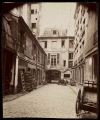 
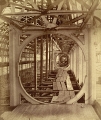 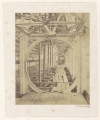    
  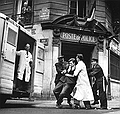  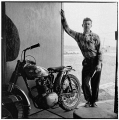 
   
PhVPhotohistory Visualizer (Be patient as this has 22 slides to load.)
The word "documentary" has its origins in physical documents but has it has morphed over time into "factual, meant to provide a record of something".[1]
Most, but not all, photography is the capturing through light of the natural world but would not be included in "documentary photography". There are overlaps here with photo reportage and photojournalism but there are also distinctions. With photojournalism it is the means of image distribution that is significant. The image might well bedocumentary in theme but change it's theme to photojournalism when distributed by a new agency or other media channel. It doesn't have to be commissioned by a media agency prior to the taking of the images to bephotojournalism making the boundary between the two themes fluid.
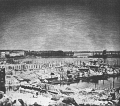    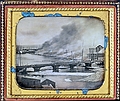 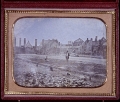
PhVDaguerreotypes of fires and their devastation
  
PhVDaguerreotypes of floods and their devastation
 
PhVDaguerreotypes of civil unrest and social upheaval
Having said this any decent one volume history of photography will include a section including the origins of documentary photography starting with the daguerreotypes of the City of Hamburg fire (1842) photographed by Hermann Biow[2], the fire at Oswego Mills (1853) documented by George N. Barnard and the charred remnants of Molson family brewery (1858) attributed to Thomas Coffin Doane. These rare photographs are about the photographer being in the right place at the right time. Other longer term documentary projects provide evidence on the living conditions of a city prior to urban development and there are a number of well known examples of this such as Thomas Annan in Glasgow,[3] Archibald Burns in Edinburgh,[4], Adolphe Terris in Marseille, Charles Marville[5] and Eugène Atget[6] in Paris. Some projects were sponsored by municipal organisations whilst others, perhaps most notably Eugène Atget, were driven by an internal desire to document architectural details of a changing world.
    
PhVThomas Annan: Glasgow
   
PhVArchibald Burns: Edinburgh
     

PhVAdolphe Terris: Marseille
    
PhVCharles Marville: Paris
    
PhVEugène Atget: Paris
It is simplistic to see documentary photography as a single entity and in Dorothea Lange's 1940 book A Pageant of Photography she wrote:
Documentary photography records the social scene of our time. It mirrors the present and documents for the future. Its focus is man in his relation to mankind. It records his customs at work, at war, at play, or his round of activities through twenty-four hours of the day, the cycle of the seasons, or the span of a life. It portrays his institutions — family, church, government, political organizations, social clubs, labor unions. It shows not merely their facades, but seeks to reveal the manner in which they function, absorb the life, hold the loyalty, and influence the behavior of human beings. It is concerned with methods of work and the dependence of workmen on each other and on their employers. It is pre-eminently suited to build a record of change. Advancing technology raises standards of living, creates unemployment, changes the face of cities and of the agricultural landscape. The evidence of these trends — the simultaneous existence of past, present, and portent of the future — is conspicuous in old and new forms, old and new customs, on every hand. Documentary photography stands on its own merits and has validity by itself. A single photographic print may be "news," a "portrait," "art," or "documentary" — any of these, all of them, or none. Among the tools of social science — graphs, statistics, maps, and text — documentation by photograph now is assuming its place. Documentary photography invites and needs participation by amateurs as well as by professionals. Only through the interested work of amateurs who choose themes and follow them can documentation by the camera of our age and our complex society be intimate, pervasive, and adequate.[7]
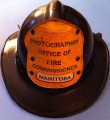 
PhVLeather firefighter's helmet with shield for "Photographer, Office of Fire Commissioner, Manitoba" (ca. 1950)
^ 412.02 Documentary > Documentary photography and the nature of time
 
PhVPhotohistory Visualizer
By its nature photography is about documenting the present but the selection of the subject reflects on the attitudes of the photographer and the prevailing societal consciousness of time. The Acropolis may be daguerreotyped as a symbol of the glory of Greece[8] or albumen prints made of the Colosseum for the grandeur that was Rome and these are clues to a broader sense of time. There is a distinction between the recording of a building to show its architectural features and the documentation of a building actually in the process of being demolished. If we consider the following photographs of Edinburgh by Hill & Adamson we can add some clarity to the point being made.
  
PhVHill & Adamson: Edinburgh
The first two are evidence of the construction of the Scott Monument which had its foundation stone laid on 15 August 1840 and was inaugurated on 15 August 1846.[9] The first photographs was taken in 1843[10] and the second in 1845[11] after the tower had been completed. The third, also by Hill & Adamson, shows masons working away on the monument in 1843.[12] The first three are about the nature of civic pride but they also carry a subtext of "pride in progress" - they are documenting the creation of a monument. Even if we disagree with whether Walter Scott deserves to be almost deified it has to be seen within the context of the time. The fourth photograph is the one that carries a different message.

PhVHill & Adamson: Lady Glenorchy's Chapel During Demolition (ca 1845)
In 1772 work on the Lady Glenorchy's Chapel was begun and it was a vast building that could seat a congregation 2,000.[13] The building was demolished in 1845 and it is process that is documented in the last of the four photographs.[14] The point here is that Hill & Adamson consciously documented a building that would be lost - they were preserving an image of that which was passed.
   
PhVThomas Easterly: Destruction of Big Mound
This has important implications as in and age of change few documented the implications of progress with the rare exception of the Destruction of Big Mound documented by Thomas Easterly.[15] Another notable exception would The Society for photographing relics of old London established in 1875 as an initiative by a small group of photographers. If we stay for the moment with architecture the Historic American Buildings Survey - HABS founded in 1933 was to research and photograph old building to maintain a registry.[16] The last two were about recording the state of buildings rather than the fact of their destruction.
Every documentary photograph has within it not only the time that the photograph was taken but how the photographer and society at large conceptualizes time.
^ 412.03 Documentary > Documentary photography and advocacy
     
PhVPhotohistory Visualizer
Further issues that run through the history of documentary photography are advocacy and propaganda.[17] In its purist form a photograph or photo-essay should tell a story rather than take a position. With Eugène Atget he was financing himself, not very well most of the time, and took photographs to record "Old Paris" - it was old at the time he was recording it and that was his passion. If he was an advocate a desire to preserve a record of a changing time was the level of his interest. Lewis Hine's photographs of the construction of the Empire State Building (1929-1931)[18] weren't an argument for improving safety standards, though they could have been, they were a visual hymn to the nobility of work and architectural greatness. This wasn't advocacy but his earlier work for the reform of child labour in America[19] paid for by the National Child Labor Committee (NCLC) clearly was. Advocacy at its best is the delivery of a clear message that highlights a social issue with visual honesty.
    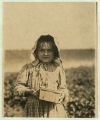 
  
PhVLewis Hine: National Child Labor Committee (NCLC)
We can not know the photographs a photographer did not take, the selection process used, the destroyed or suppressed negatives, rarely do we have documentation on how a photographer edited the message and the changes made through time to improve the story. Often we have to judge the integrity of a series based solely on the surviving photographs with little or no additional reliable information.
Jacob Riis (1849-1914)[20] was by profession a journalist and used photography to provide evidence for his crusade to show the intense poverty of New York. The most significant book by Jacob Riis was How the Other Half Lives: Studies Among the Tenements of New York (1890)[21] that has poor quality printing but the power of the images and accompanying text delivered a powerful message.
   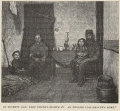
PhVJacob Riis: How the Other Half Lives: Studies Among the Tenements of New York (1890)
Some of the finest documentary projects of the twentieth century such as Larry Clark's Tulsa (1971),[22] Danny Lyon's The Bikeriders (1968)[23] are not advocacy. The projects are in-depth and thought-provoking probes into worlds most of us will not see.
    
PhVLarry Clark: Tulsa (1971)
   
PhVDanny Lyon: The Bikeriders (1968)
In a world of the ubiquitous camera where everybody records the world around them and photojournalism is fragmented into a plethora of media distribution channels scrambling for ad revenue a more pressing issue needs to be addressed. How will documentary projects be financially supported when the news media will rarely fund long-term assignments? If cameras are everywhere will the media obtain images cheaply but not the independence of the story. If advocacy can be concealed within the news how is the bias filtered out or can it be?
^ 412.04 Documentary > Documentary photography and ethics
Ethics concerns the moral decisions of humanity and the courses of action in specific situations. The nature of the work of photojournalists and documentary photographers places them into locations where the moral balance of society has been discarded such as conflict. Should a photographer become an active participant in the conflict where the injustice is seemingly so obvious? Should, or can, a famine victim be saved in a situation where tens of thousands are starving?
Sudan - Famine

PhVKevin Carter: Sudan
Those who view photographs from a distance have their knowledge bounded by the frame. We criticize from a lack of knowledge but with feelings that are based on empathy and at times with a sense that we would be better people than the photographers. We would have intervened when they didn't - or we think they didn't do enough. One of the most well known cases of this is the Pulitzer-winning photojournalist Kevin Carter who was a well-respected photojournalist who had been a part of the Bang Bang Club that had photographed in the South African townships during Apartheid.[24] In March 1993 Kevin Carter was photographing in Sudan and took a photograph of a slumped over child with a vulture behind with the connotations obvious. A telephoto lens would collapse the distance between the two but the image has visual power because of the future it supposedly predicts. The photograph was published in The New York Times on 26 March 1993 and was widely republished and there was a natural response "What happened to the child?" On 27 July 1994 Kevin Carter committed suicide, depressed with the loss of fellow photojournalists, money problems and what he had seen. Parts of his suicide note read:
"I am depressed ... without phone ... money for rent ... money for child support ... money for debts ... money!!! ... I am haunted by the vivid memories of killings and corpses and anger and pain ... of starving or wounded children, of trigger-happy madmen, often police, of killer executioners ... I have gone to join Ken if I am that lucky."[25]
The ethics of a situation are rarely clear cut as interviews and accounts of others who were at the same event provide additional information, but as with witness accounts more generally, clarification is murky.
Haiti - Earthquake
 
PhVEarthquake in Haiti
During the aftermath of the 2010 earthquake in Haiti[26] a 15 year old girl Fabienne Cherisma was shot by the police for looting. The dead girl was photographed by Paul Hansen and the resulting photograph won the Swedish Picture of the Year Award 2011. A further picture of the same event was photographed by Nathan Weber the same prostrate girl in a pink dress with a line of photojournalists taking essentially the same image as Paul Hansen. Nothing could be done for the girl as she was already dead but there is a callousness to seeing people making their living from the death. It does raise another issue that is far more difficult to answer:
The debate that is arising in Sweden revolves around the question, “Would Sweden have donated less for disaster relief if that photo had not been published?” Or “Would fewer resources and professionals have been sent?”[27]
Reportage
^ 412.05 Documentary > Early examples of photo reportage
    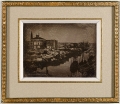 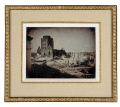
     
     
PhVPhotohistory Visualizer (Be patient as this has 18 slides to load.)
The early history of documentary photography and what would eventually become photojournalism consists of the small number of newsworthy incidents of which photographs have survived or are known to have existed. Until the halftone printing process became commonly used towards the end of the nineteenth century it was not possible to print photographs and therefore they had to be converted into woodcuts or engravings.
Early examples of photo reportage can be divided into several categories:
- Natural catastrophes
The Hamburg Fire (5-8th May 1842) with Daguerreotypes by Hermann Biow (?-1850) is currently thought to be the first news event captured on a photographic plate.
    
PhVThe Hamburg Fire (1842)
There are 1843 Daguerreotypes by an unknown photographer of the floods at the port of Nantes in France .
 
PhVFloods at Nantes (1843)
In 1853 George N. Barnard took two photographs of the fires at the Ames and Doolittle mills, Oswego, New York[28] and he went on to record the American Civil War (1861-1865).[29]
 
PhVGeorge N. Barnard: Fire at Oswego Mills (1853)
In 1864 James Mudd recorded the devastation of the Great Flood when the Dale Dyke Dam[30] burst to the west of Sheffield in Northern England.

PhVJames Mudd: The Great Flood in Sheffield (1864)
- Social upheavals
During the Year of Revolutions (1848) in Europe two Daguerreotypes of the Great Chartist meeting on Kennington Common[31] in Britain were taken by William Kilburn and others of the street barricades of Paris recorded by Charles-François Thibault[32].
 
PhVThe Year of Revolutions (1848)
- The individual in peril
The plight of a single individual is something that the public can sympathize with. One of the earliest such tragedies photographically recorded was at Niagara Falls by Platt D. Babbitt (1823-1879) in July 1853. Joseph Avery clung to a rock for hours before losing his grip and being drowned.[33]
Such events continue to be a mainstay of news journalism with examples such as the photograph John Gilpin took of stowaway Keith Sapsford as he fell to his death from a Japan Air DC-8 over Sydney, Australia in February 1970. During the attack on the World Trade Center on 11 September 2001 Richard Drew took a photograph of The Falling Man who was falling to certain death. The man photographed at exactly 9:41:15 a.m. is in peril as we know there is no chance of survival.[34] There is nothing else in the photograph except the walls of the North Tower and that itself will collapse later on. When documentary film director Henry Singer spoke about in an interview he said:
What is extraordinary beyond the graphic composition of this image — the parallel lines, the light on one of the towers — is the fact that the Falling Man, as he has come to be known, looks so composed. It’s the most horrific moment but there is a calmness to the image. And I think this is one of the reasons why it is so memorable. It captures the last moments of somebody’s life but it does so in a way that is peaceful and beautiful at the same time. That is one of the many reasons why it has burned itself into the consciousness of anybody who has looked at it.[35]
 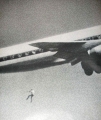 
PhVIndividuals in peril
- War
War photography is such a key part of photojournalism that it is discussed at considerable length elsewhere on this website but a few relevant points can be repeated here.
The photographs of Roger Fenton[36] and James Robertson during Crimean War (1854-1856) are amongst the first of any conflict.
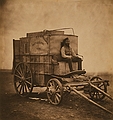   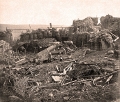 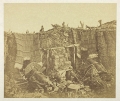
PhVThe Crimean War
In America Adrian J. Ebell photographed the refugees from the Indian attacks on the Northern Plains that led to the First Indian War and they were published as copied illustrations for the article The Indian Massacres and the War of 1862 that appeared in Harper's New Monthly Magazine (1863).[37]
  
PhVAdrian J. Ebell: The Indian Massacres and the War of 1862
The large number of photographs taken by the associates of Mathew Brady[38]), Alexander Gardner[39], Timothy O’Sullivan[40] and many others of the American Civil War (1861-1865) are also key works in early photojournalism . Single events such as General Grant's Council of War at Massaponax Church (Virginia) on 21st May 1864, photographed by Timothy O’Sullivan show how photography was used as the basis for printed illustrations in popular publications such as Century Magazine.
     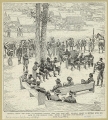
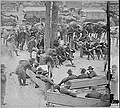  
PhVTimothy O’Sullivan: General Grant's Council of War at Massaponax Church (21 May 1864)
- Extended reports on an event
The photographs by Alois Löcherer (1815-1862) documented the construction of the sixty foot tall bronze statue of Bavaria by Ludwig von Schwanthaler (1802-48). This is the first known example of photo reportage over an extended period.[41]
  
PhVAlois Löcherer: The statue of Bavaria
Local Daguerreotypist Thomas Easterly[42] photographed Big Mound. Fifth and Mound Streets, St. Louis in 1852-1854 and when the destruction of the mound was carried out in 1869 he took a series of daguerreotypes to document the event.
   
PhVThomas Easterly: The Big Mound (1852-1854)
Although catastrophes and war have provided some of the most dramatic images photography was being used in other fields of photojournalism because of its ability to provide a social commentary to abuses of the poor.
^ 412.06 Documentary > City of Hamburg fire (1842)
     
PhVPhotohistory Visualizer
The devastation of the 1842 fire in Hamburg, Germany was photographed by Hermann Biow with daguerreotypes.[43]
The scale of of damage is given is a contemporary account:
"On the night of the 4th of May, a fire, supposed to be the work of an incendiary, broke out in the city of Hamburg, the great commercial emporium of Germany, and continued to rage till the morning of the 6th, when, by blowing up a number of houses with gunpowder, the progress of the flames was arrested. Several hundred lives were lost, from 1500 to 2000 houses were laid in ruins, and the total loss of property is estimated at not less than forty or fifty million dollars."[44]
^ 412.07 Documentary > George N. Barnard: Oswego Mills (1853)
About this photographer | Photographs by this photographer
 
PhVPhotohistory Visualizer
The 5th July 1853 fire destroyed the granaries and elevators of Oswego Mills, New York, USA was documented by George N. Barnard.
A contemporary account gives a brief description:
"The destructive fire which occurred here on the 5th of July, 1853, destroyed most of the mills and elevators on the east side of the river. Through indomitable energy, however, they have all been rebuilt, upon a larger and more extensive scale, with all the modern improvements."[45]
Social commentary
^ 412.08 Documentary > Early examples of using photography to provide a social commentary
  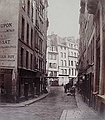 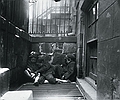
PhVPhotohistory Visualizer
Photographic prints have the ability to inform the higher classes of society about the living conditions of the less fortunate poor and homeless. By the 1860s the wretched decaying quarters of cities were revealed and social remedies were required and this became a political objective.
The examples shown have a mixed effect upon a modern audience - they show the cramped alleys and poverty but at the same time there is a misplaced nostalgia for a world that has largely gone in the developed world.
Great Britain
^ 412.09 Documentary > Richard Beard: Illustrations for Henry Mayhew - London Labour and the London Poor
About this photographer | Photographs by this photographer
     
     

PhVPhotohistory Visualizer
In 1851 Henry Mayhew's book London Labour and London Poor[50] was published in three volumes collecting together his well researched articles published in the Morning Chronicle. The book was an attempt at educating the middle and upper classes in Victorian England to the appalling social conditions of London. The illustrations for the book were based on daguerreotypes that were taken under the supervision of Richard Beard that were converted to wood engravings for publication because of the inability to print photographs within books at the time. As Naomi Rosenblaum pointed out in her A World History of Photography[51] the result of using wood engraving is that the characters are removed from their original surroundings by the use of 'sketchily indicated' backgrounds and this separates the viewer from the subject.
Illustrations based on Beard daguerreotypes included:
^ 412.10 Documentary > Joseph Cundall: Construction of the Great Eastern at John Scott Russell's Yard, Milwall (1855-1856)
About this photographer | Photographs by this photographer
     
     
   
PhVPhotohistory Visualizer (Be patient as this has 16 slides to load.)
^ 412.11 Documentary > Thomas Annan: The Old Closes & Streets of Glasgow
About this photographer | Photographs by this photographer
     
   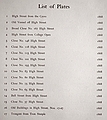  
     
     
     
   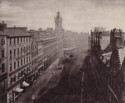  
     
     
 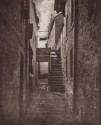    
     
     
     
PhVPhotohistory Visualizer (Be patient as this has 72 slides to load.)
This section covers the portfolio The Old Closes & Streets of Glasgow - engraved by Annan from Photographs taken for the City of Glasgow Improvement Trust. With an Introduction by William Young, R.S.W. that was published in 1900 by James MacLehose & Sons of Glasgow. The importance of this work is that it includes photographs taken by Thomas Annan[52] (1829-1887) in 1868 of the squalid slums and closes of the Scottish city. These photographs are amongst the earliest taken specifically as a record of housing conditions prior to urban renewal and as such they are an important milestone in the history of documentary photography.
In the introduction to a 1977 reprint of this work Anita Ventura Mozley wrote:
It is likely that Annan regarded the commission from the Trustees of the Improvements Act as just another he received when his success as a commercial photographer of Glasgow was increasingly recognized. However inadvertently, he did give us the first thorough photographic representation available of the dwelling places and the inhabitants of an urban slum.[53]
The importance of the choices made by the photographer was almost totally ignored in the original work and it was only on page 22 of the Introduction by the historian William Young that he is mentioned:
The City Improvement Trustees acquired, by act of parliament, in 1866, the right to alter and reconstruct several of the more densely built areas of the city, and these operations, it was foreseen, would remove many old and interesting landmarks. Before entering upon their work, the Trustees arranged with the late Mr. Thomas Annan to take photographs of a series of views of the closes and streets more immediately affected, and a few copies were presented to members of the Corporation and others.[54]
When Martin Parr and Gerry Badger describe this work in their The Photobook: A History - Volume 1 they make an important observation about the camera viewpoint choices that Annan was largely forced into by the nature of the architectural spaces he was attempting to record.
The Scottish 'close' and 'wynd' - the terms are almost interchangeable - were familiar landmarks in any city with a densely packed medieval street pattern: narrow passageways leading either from one street to another, or into the middle of a building block. It is the consistently narrow form of the alley that gives formal coherency to most of Annan‘s imagery - he simply stood the camera in the middle of the passageway and shot down it.[55]
Thomas Annan was not the first to record architectural subjects. There had been the Mission Héliographiques in France which combined the talents of Edouard Baldus, Hippolyte Bayard, Gustave Le Gray, Henri Le Secq and Auguste Mestral. There were also the wet collodion photographs of Charles Marville (1816-1879) capturing in the 1860s a record of the streets of Paris prior to their destruction to make way for Baron Georges-Eugène Haussmann’s urban redesign. The work of Annan pre-dates that of Eugéne Atget (1857-1927) in creating an important record of a 19th century urban slum: a slum that to many Glasgow residents in the 1860s was home all the same.
Thomas Annan was not a purist and improved his printed photographs:
He added clouds, which brighten the skies over Glasgow‘s slums, and he whitened the wash on the line. He did this for pictorial effect, for nice balance. While his taste for the picturesque, for a tradition inherited from painting, and quite in accord with salon practice of the day, may distort to some extent the immediacy of the mise-en-scene, we must appreciate the fact that he did not tidy up the rest of the picture, as his son, James Craig Annan, did when he made the photogravure plates for the 1900 edition. The photogravures are lighter in tone, and consequently in mood, in the sense of the place, than Annan‘s carbon prints. Moving figures, those ghosts who would not stand still for the photographer, are completely excised in the photogravure edition...[56]
This brings us to the point that there are multiple versions of the portfolio in carbon prints and photogravures and there are differences between them that are not only a part of the processes involved in reproduction but also in the aesthetics of the printer. When James Craig Annan, the son of Thomas Annan, created the photogravure plates for the 1900 edition he did not remove all of the "ghosts" and though lacking in power compared to their unadulterated carbon print counterparts, the plates shown here do not lack in content or feeling in richness of tone.
Finally it is worth providing a short background to the different versions that exist of these photographs. A very small number of bound sets of Annan‘s albumen photographs from this endeavor are known to exist: examples are in the Mitchell Library in Glasgow and in the Scottish National Portrait Gallery in Edinburgh. Surprisingly, another set of 31 mounted albumen prints with printed caption labels but lacking the title page and enclosed in a contemporary green half morocco portfolio, lettered on upper cover Glasgow Improvements Act. 1866. Photographs of Streets, Closes &c. taken 1868-71 sold at auction for £13,000 (Lyon and Turnbull in Edinburgh - July 11th, 2006).
In the introduction by Anita Ventura Mozley (1977) we also learn of a second edition of this work: "Sometime late in 1878 or early in 1879, an edition comprising 40 carbon prints was published in an edition of 100 quarto-sized copies by Annan‘s Lenzie firm for the Glasgow City Improvements Trust." At the Phillips de Pury auction (New York - April 22, 2004) a complete carbon version of this edition was offered for sale and it realized £66,000.
The present edition comes from the photogravure edition of 100 copies (not numbered) issued in 1900 by James MacLehose & Sons of Glasgow. The portfolio contains 50 fine photogravures from wet-collodion negatives taken between 1868 and 1899 and engraved and printed by James Craig Annan of T. & R. Annan & Sons. The later pictures added to the 1900 edition done after Thomas Annan‘s death in 1885 were most likely done by Thomas Annan‘s eldest son John Annan (1862-1947). According to the National Library of Scotland, John Annan was "a member of the family firm of photographers. John specialized in architectural photography and was known for his photographs of Glasgow slums." The National Galleries of Scotland online collections website states in part "His son John inherited the project and in 1900, the family firm T.&R. Annan produced a photogravure album with new prints by John Annan".
T. & R. Annan & Sons also printed and issued a second 1900 edition of 100 copies under their own imprint. Glasgow historian William Young supplied an introduction (23 pages-dated August of 1900 in portfolio) for both 1900 photogravure editions but only makes a brief reference to the author of these historically important photographs.[57]
^ 412.12 Documentary > Archibald Burns: Edinburgh
About this photographer | Photographs by this photographer
   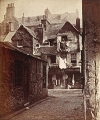  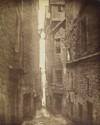
     
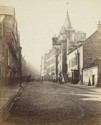    
PhVPhotohistory Visualizer (Be patient as this has 17 slides to load.)
Archibald Burns was active in Edinburgh (Scotland) between 1858 and his death in the early 1880s. He provided photographs for the tourist trade and to illustrate books including Picturesque Bits from Old Edinburgh (1868). In 1871 he was appointed by the Edinburgh Improvement Trust to document an over-crowded slum area of the city after the buildings had been demolished in February 1871.[58]
^ 412.13 Documentary > Philip Henry Delamotte: The Crystal Palace (1854-1855)
About this photographer | Photographs by this photographer
     
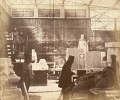     
 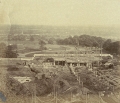 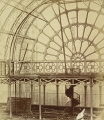   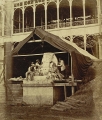
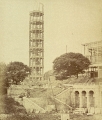     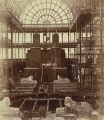
     
     
     
     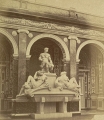
  
PhVPhotohistory Visualizer (Be patient as this has 51 slides to load.)
Elizabeth Creveling
P. H. Delamotte Photograph of the Interior of the Crystal Palace
Courtesy of the University of Maryland, Digital Collections
A Treasury of World's Fair Art & Architecture
After a successful year of housing the Great Exposition, the Crystal Palace[59] by Joseph Paxton[60] was disassembled and moved to Sydenham, where it stood for the next 85 years[61]. The Palace, built for the 1851 World's Fair in London, was an architectural and engineering wonder modeled after the bridge and train shed construction of the mid-nineteenth century. The structure had been designed to be quickly assembled out of prefabricated members and easily rebuilt elsewhere. Its light construction was made possible to use of thin cast iron prefabricated elements combined with wood and a glazed outer shell.
The Crystal Palace housed the most spectacular collection of artistic and industrial wonders ever assembled in one place thus far. Visitors came from all over the world to see this display of power at the "Exhibition of the Works of All Nations" which was organized by Prince Albert and Henry Cole[62]. The success of the Crystal Palace that cost "a penny per cubic foot"[63] brought Joseph Paxton much praise as well as a knighthood. The structure at Hyde Park was designed as a temporary building, able to be constructed and disassembled easily. During the Great Exposition the Crystal Palace housed the works of craftsmen, engineers and artists. The most popular of these exhibits was a crystal fountain made especially for the exhibition.[64] The full 33,000,000 cubic feet of Crystal Palace was filled with displays and people crowding the aisles examining these wonders.[65]
When the Fair closed the fate of the Crystal Palace was a topic of extreme importance. Its popularity was obvious and Paxton suggested transforming it into a "Winter Park and Garden Under Glass" where visitors could see displays of botany, ornithology, and geology and at the same time enjoy the building as an indoor park.[66] This proposal was opposed by Colonel Sibthorpe, a member of the Metropolitan Police Force who vehemently disapproved of the nature of the Exposition and the preservation of the building as a cultural icon. Knowing it would take some work to save his masterpiece, Paxton began raising money and eventually came up with over 500,000 pounds. He formed a company to purchase the building from its initial builders, the engineering firm of Fox and Henderson. The site selected to re-erect the Palace was 200 acres of wooded parkland on the summit of Sydenham Hill. Rebuilding began in August 1852.
By rebuilding the famous Crystal Palace and making it a permanent symbol of England's success and role in the Industrial Revolution, the government created a cultural icon that would forever stand in testament to the grand nature of the first International World's Fair. A decision was made to alter the original plans and enlarge the structure, making the Sydenham Palace more massive than its predecessor. The most characteristic portion of the Hyde Park structure, the arched transept, was emulated throughout when the whole structure was rebuilt, creating an entirely arched nave and transept system).[67] These same arched transepts were considered awe-inspiring by the Victorians, who were deep in the Romantic Age and well versed in the eighteenth-century notion of the Sublime. The lunettes with the familiar spoke pattern provided a terminus for the long nave and served as an element of continuity between the Hyde Park building and the one rebuilt in Sydenham.
The new Crystal Palace became a museum of world cultures, with "style courts" such as the Nineveh, Roman and Egyptian courts depicting ancient and modern civilizations for visitors. Matthew Digby Wyatt and architect Owen Jones were "sent abroad to ransack the world's great art collections" and find ideas for the courts.[68] Aside from the great courts, Joseph Paxton also "envisioned a system of fountains that would rival Versailles".[69] To accommodate this great waterworks two large towers were erected further distancing the Sydenham structure from its predecessor in Hyde Park.
Photography had been invented thirteen years before the erection of the Crystal Palace. By 1851 this new medium had gone through many improvements, and quickly became a documentary and artistic tool for all people. Photographs were used for artistic endeavors, documentation, and souvenirs. Many photographers flocked to the Great Exposition to record the feats in architecture and engineering. William Henry Fox Talbot (1820-1877) recorded the interior of the Crystal Palace while it was still in Hyde Park and did so on Sundays while the Exhibition was closed.[69] Another photographer, Philip Henry Delamotte (1820-1889) recorded the building after its move to the Sydenham location.[71] He also photographed many English landmarks such as Yorkshire abbeys and Strawberry Hill.
Delamotte produced several sets of prints documenting the Crystal Palace, which he sold at a profit. A set of nine original albumen reprints is housed in the Special Collections room of the University of Maryland Architecture Library. One print titled "View up Nave from Gallery at North End" displays the vast interior of the new structure. It is approximately eight by ten inches mounted professionally for the set published by Crystal Palace Art Union. Printed on the paper surrounding the photograph are captions including Delamotte's name and documentation attributing the printing to "Negretti and Zambra."
The print on the screen [Referring to a photograph in the University of Maryland Collection] exhibits the deep purple hues achieved through the albumen process and gold chloride solution. The characteristic color was protected from fading on the edges by mounting the prints and keeping them in a darkened collectible box. There is little tonal separation, due to the nature of albumen printing. The geometric complexity of the structure is clearly shown, as well as its numerous galleries and the roof structure displaying the beautiful arched nave. Delamotte positioned his tripod along a side of the nave to achieve a perspective view that would capture the great depth of the building and convey the grand nature of the space. In the foreground Delamotte captured a large amount of detail in the vegetation and supports. The photograph reflects the impression that the exhibits "inhabit" the building, allowing the viewer to see how replete the Palace was with displays. Delamotte did not need to use supplementary lighting; the building itself was perfect for photographs, a virtual skylight. All that was needed was a sunny day. Patches of sun can be seen on the floor. Delamotte could clearly sense the architectural beauty in his subject and captured it artfully. The hustle and bustle of the original building is not conveyed in this print, which possesses a serene quality due to the lack of human presence.
Delamotte was able to capture the character of the Crystal Palace, and provided the public a peek into the famous structure. The Crystal Palace will live forever in his beautiful prints helping to influence artists and architects into the future. During its 85 years standing, the Crystal Palace appeared in millions of photographs, establishing it as a symbol of English power from both a political and architectural standpoint.
This text is freely available for the purpose of academic teaching and research provided the text is distributed with the header information provided. Courtesy of the University of Maryland, Digital Collections, A Treasury of World's Fair Art & Architecture
 
PhVPhilip Henry Delamotte: The South Wing seen from the Palace
^ 412.14 Documentary > John Thomson: Street Life in London
About this photographer | Photographs by this photographer
     
     
     
     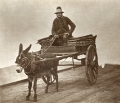
     
     
     
     
PhVPhotohistory Visualizer (Be patient as this has 48 slides to load.)
When in 1877 the book Street Life in London[72] was published it included 36 Woodburytypes, an early photographic process, illustrated by John Thomson[73] to accompany the texts by Adolphe Smith. In some of the photographs the person seems to have been carefully selected and their clothing and paraphernalia laid out to create a visually agreeable picture. They are posed portraits of street life rather than the unguarded captured moment.
^ 412.15 Documentary > The Society for Photographing Relics of Old London
     
   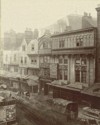  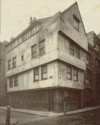
     
     
  
PhVPhotohistory Visualizer (Be patient as this has 27 slides to load.)
The Society for Photographing Relics of Old London was established in 1875 and photographers Henry Dixon, William Strudwick and A[lfred]. & J[ohn]. Bool documented the buildings that were at risk of demolition in London.[74] The project was published in annual parts over twelve years from 1875 onwards and included a total of 120 photographs.
The Publisher's Circular in 1879 commented on their work:
The Society for Photographing Relics of Old London is about to issue a fresh selection of views in permanent photography, carrying on the series of publications which illustrate many of the fast-vanishing historical and picturesque buildings of the metropolis. Canonbury Tower, Barnard's Inn, old houses in Aldersgate-street, Christ's Hospital, the churchyard of St. Laurence Pountney, and a house in Great Queen-street supply subjects for this issue.[75]
In 1886 the following letter from George H. Birch was published in Walford's Antiquarian:
OLD LONDON RELICS.
Sir,—Some of the newspapers have been calling attention to the Society for Photographing Relics of Old London, deploring the necessity of its collapse, and attributing the same to a want of interest on the part of the general public, and of its necessary support in the form of subscriptions. This is scarcely a correct statement of the actual facts, although one which might very justly be deduced from the notice of this last issue being the final one of the "Society." In one sense, a society it never has been; for its management, the choice of subjects, the excellent letterpress accompanying each issue, and the various details and complicated work and trouble attached to it, have been the labour of love of one man only, Mr. Alfred Marks, the originator, director, and manager from the first, the funds derived from subscriptions having been expended entirely upon its publications; and the fortunate subscribers have received their photographs, not mere sun pictures, as evanescent and as fleeting as the very sunshine itself, but permanent memorials of an "Old London" fast disappearing from our view in our own times, here preserved to those that come after by the taste, energy, and forethought of one man, to whom others like myself will be for ever indebted. These labours have ended from lack not of support, but of material; 120 pictures of Old London practically exhaust the subject. But there is a moral attached. The first issue of these photographs was in 1875, and in the decade just elapsed nearly one-half have disappeared or are threatened with probable demolition. In the next decade to come how many of the remainder will be left? The subject is "too dismal to contemplate "—a wealthy city, not altogether without taste, and with such lovely memorials of the past, thus deliberately to denude itself of every atom, of every spark of its antiquity.
Devereux Chambers, Temple. GEORGE H. BIRCH, F.S.A.[76]
^ 412.16 Documentary > Mass Observation (Great Britain)

PhVPhotohistory Visualizer
In 1937 in Great Britain Mass Observation was started within the intention of carrying out a sociological project that would examine contemporary life in all its minute and fascinating detail.[77] The project relied upon volunteers who prepared diaries to preserve the details of everyday life and questionnaires were sent out to collect information for specific requirements.
In addition to the written materials (now held by the Special Collections Department of the University of Sussex, in the UK) a number of photographs were taken. Humphrey Spender for example took 900 photographs to support his Worktown project[78] that dealt with working class life in Bolton in Northern England. Here photographs of public houses, pigeon racing, collieries, vegetable growing are all preserved. Spender used a hidden camera as he:
... believed obsessionally that truth would be revealed only when people were not aware of being photographed[79]
^ 412.17 Documentary > Nick Hedges: Make Life Worth Living: Photographs for Shelter, 1969-72
About this photographer | Photographs by this photographer
     

PhVPhotohistory Visualizer
When Nick Hedges documented appalling housing conditions in the UK for the charity Shelter in the late 1960s it was a grim situation. The Victorian slums had continued long past what was acceptable and post-Second World War poverty and industrial decline had created a crisis of damp, unsanitary houses smelling of mould. Nick Hedges was aware of the texts of James Agee and the photographs of Walker Evans[80] and influenced by them.[81] The selection of camera angles and taking multiple shots of an action asking people to move or carry out a specific task can hint at posing but post-event criticism can miss the point of what a photographic series represents. Meaningful documentary photographs are always a form of propaganda with multiple "meanings".
In the afterword to a 2014 book of his photographs Nick Hedges wrote of how he worked with the British charity Shelter:
We would discover, or be introduced to, families living in the most distressing circumstances. With the families’ agreement they would be photographed going about their daily life. These photographs and interviews were then used in publications and research documents. The charity’s education department was involved in a long study of different types of community across Britain. This meant I was able to visit rural villages, new towns and coal mining villages, in addition to urban communities. In working with disadvantaged families it was essential to develop a relationship of trust. Nothing was ever forced, nothing was ever staged. Your own presence had to be reduced to the minimum.[82]
Just as Robert Frank's book The Americans[83] highlighted social issues in 1950s America so the work of Nick Hedges drove home the message that all was far from well in Britain and charity was required to handle issues under-resourced by governments.
^ 412.18 Documentary > John Bulmer: The North of England
About this photographer | Photographs by this photographer
     
   
PhVPhotohistory Visualizer
John Bulmer studied engineering at Cambridge before moving into photography and documentary film. In the 1960s he photographed the North of England in both black and white and in colour during a period when illustrated weekly supplements such as the Sunday Times Magazine were popular, hard-hitting and influential.[84] As he said:
"I wasn’t interested in art photography, I was interested in photography as journalism, the last thing I wanted to do was put my photographs on the walls of galleries; I wanted them in magazines."[85]
Working for magazines such as Sunday Times Magazine, Queen and Town, where Tom Wolsey was art director, John Bulmer was influenced by Henri Cartier-Bresson from France and by the photographs included in LIFE[86] magazine such as the photo-essays of W. Eugene Smith[87] as John Bulmer said in an interview:
“Eugene Smith and [Henri] Cartier-Bresson influenced me, and Bill Brandt to some extent, but I felt the Americans were doing so much more. When you look at Eugene Smith’s Pittsburgh Project it was so prolific. You only had to open Life magazine in the late fifties, early sixties every week and it was sensational.” [88]
It was the North of England that Bill Brandt[89] had documented in the 1930s and that Chris Killip and Martin Parr would return to in the 1980s and 90s. In those days the Great North Road[90] led from the relatively affluent South to a totally different world of industrial landscapes and blackened towns a few hundred miles to the north. The weekly photojournalism in the magazines revealed these stark differences.
^ 412.19 Documentary > Paul Graham: A1: The Great North Road
About this photographer | Photographs by this photographer
   
PhVPhotohistory Visualizer
Parts of the Great North Road follow Roman roads such as Ermine Street and so the North / South route in the UK has an ancient past. It evolved into a coaching road from London to Edinburgh that was paved over and enhanced long before before the construction of motorways.[91] With the construction of the M1 from London to Leeds between 1959 and the early 1970s an alternate, and faster, motorway took a lot of traffic from the A1 which became a less glamorous route of truck drivers fed by smoke filled diners of brightly coloured formica tables serving bacon sandwiches, chips and mugs of tea - a land of tacky neon and cheap signage.
In the UK documentary photography was flourishing as the Art Council was providing grants to assist in promoting photography. Paul Graham[92] in his book A1: The Great North Road (1983)[93] was capturing in colour a part of working class culture that was being passed, literally and metaphorically, by the modern world of the M1. This was a world of tired lorry drivers, borded waitresses, big trucks and Vauxhall Vivas pausing only for amenities of a bathroom and calories. The physical size of the UK meant that his studies are not those of the distances or cultural diversity photographed by Robert Frank or written about by Jack Kerouac, who wrote the introduction to The Americans,[94] but even so Graham captured the sadness of a neglected strip of English tarmac.
^ 412.20 Documentary > Chris Killip: Seacoal
About this photographer | Photographs by this photographer
 
PhVPhotohistory Visualizer
In 1983 and 1984 Chris Killip repeatedly returned to the community of Lynemouth, Northumberland, on the north-eastern coastline of England where fragments from the coal seams eroded by the sea are washed up on the beaches.[95] Men used nets on poles to bring up the chunks of coal that could be tossed into horse drawn carts backed into the waves. The gritty toil and hard work to collect and bag the coal was captured, appropriately, on black and white film giving it an authority that colour would have failed to do. In 1985 a British docudrama was released about live on this harsh industrial environment.[96]
Canada
^ 412.21 Documentary > William Notman: The construction of Victoria Bridge, Montreal, Canada (1854-1859)
About this photographer | Photographs by this photographer
  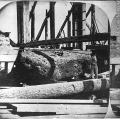 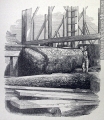  
   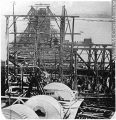  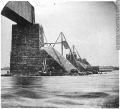
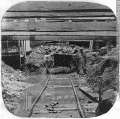  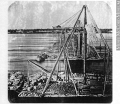   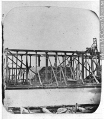
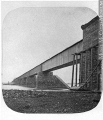   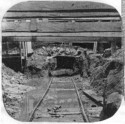 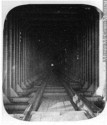
PhVPhotohistory Visualizer (Be patient as this has 23 slides to load.)
William Notman emigrated to Canada in 1856 and became one of the preeminent Canadian photographers taking cityscapes of Montreal and intriguing photocollages of large groups. He had studios in various Canadian cities including Montreal, Ottawa, Toronto and Halifax. The Victoria Bridge being constructed in Montreal was a significant civil engineering project for Canada and the British Empire and so Notman documented the progress of the construction.[97] Within the collection at the McCord Museum of Canadian History there are salted paper prints along with coloured ink drawings made from some of them allowing for comparative analysis between two distinct modes of documentation.[98]
The following contemporary account from 1859 describes this engineering marvel:
THE VICTORIA BRIDGE.
This gigantic undertaking forms one of the most interesting and wonderful features connected with the city, at Point St. Charles.
It is being built for the purpose of enabling the Grand Trunk Railway to form a continuous railroad communication with the railroads of the United States, instead of passengers being obliged to cross the river in steamers, as at present
The width of the river where the bridge is being built is very nearly 2 miles.
The current of the river is very rapid—with a depth of from 4 to 10 feet, excepting in the main channel, where it is from 30 to 35 feet deep.
In the winter, the ice is formed into a great thickness, and frequently immense piles accumulate—as high as 80 to 40 feet Thus piled up in huge boulders, the water rushes through them at a fearful rate, driving the blocks of ice along, and crushing all before them.
The bridge will consist of 24 strong piers, standing 242 feet apart, excepting the entire span, which is 339 feet wide. They are all perpendicular on three sides, and slope down to the water-edge against the current, so as to withstand the force and action of the floating masses of ice, on its breaking up. Each pier is estimated to withstand the force of 70,000 tons of ice at one time.
Resting on these piers, and running from abutment to abutment, is the bridge, which consists of a hollow iron tube, 22 feet high, and 16 feet wide.
The entire span is to be 60 feet above the average level of the water, thence sinking towards each end 1 foot in 130, thus making the height of the abutments about 37 feet
The estimated cost is about £1,250,000 stg. The weight of the iron in the tubes will be 8,000 tons, and the contents of the masonry will be about 3,000,000 cubic feet The whole will be completed in the autumn of 1859 or spring of 1860. As is well known, the engineer of this greatest bridge in the world is Mr. Robert Stephenson of Newcastle-upon-Tyne.
The whole of the views of Montreal, as given in the accompanying pages, were taken for this work by Mr. Notman, photographer, Montreal, and the clear and sharp photographs supplied by him for the purpose of engraving from, affords the best evidence of his being a first-class artist.[99]
This account specifically refers to the photographs of William Notman.
France
^ 412.22 Documentary > Charles Nègre: Vincennes Imperial Asylum (1859)
About this photographer | Photographs by this photographer
 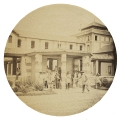 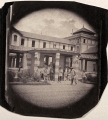 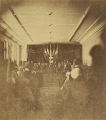  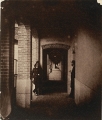
   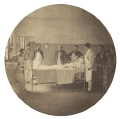  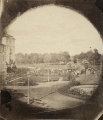
 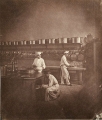    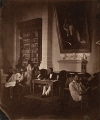
  
PhVPhotohistory Visualizer (Be patient as this has 21 slides to load.)
The following contemporary account was published on the "Imperial Asylum at Vincennes for Convalescent Workman" in The Medical News and Library in December 1860:
Imperial Asylum at Vincennes for Convalescent Workman. - The Moniteur Universal of the 9th of July contains an interesting account of the convalescent hospital, established by the Emperor of the French, in the neighbourhood of Paris, from which we extract the following particulars: —
The Asylum of Vincennes was founded by a decree of the 8th March, 1855, for the temporary reception, during their convalescence, of workmen who had received injuries or contracted diseases. The building having been finished, and the internal arrangements completed, the inauguration of the Imperial Asylum took place on the 31st of August, 1857. It has now been in operation for nearly three years.
Nearly forty acres of forest, belonging to the domains of the Crown, were consecrated to the Asylum, which is built upon an elevated terrace, freely exposed to the air from all quarters. Since the opening of the institution, up to the end of June 1860 (comprehending a period of two years and ten months), the number of convalescents admitted has amounted to 14,000. These convalescents belong to the following categories: 1st. Convalescents sent from the hospitals of Paris and the suburbs; 2d. Convalescents sent by the local charitable institutions of the city; 3. Convalescents from injuries received in the public works; 4th. Members of societies of workmen established for their mutual assistance; 5th. Workmen belonging to establishments, the directors of which have obtained from the Minister of the Interior authorization to send, on payment of a subscription, their convalescents to the Asylum, such as the railroads, gasworks, and some large private establishments; 6th. Workmen who have been treated at their own homes, and who have received from their medical attendant certificate of convalescence.
It is by the express orders of the Emperor that the Asylum is now open, without distinction, to every convalescent workman. There are at present 411 beds.
Two elegant vehicles are attached to the institution, and bear the imperial arms. One of these is of the same size as an ordinary omnibus, the other is somewhat smaller. Every day one or other of these vehicles, according to the number requiring removal, goes to the various hospitals to pick up the convalescents, and even goes to the residences of those who have been treated at their own homes. The same vehicles convey the inmates back to Paris when they leave the Asylum. The first time that the large omnibus stopped in front of the Hotel-Dieu a crowd of spectators speedily assembled; people asked one an other what could be the meaning of this elegant vehicle with the imperial arms in such a locality; but when the spectators saw the poor convalescents, weakened by disease, come out of the hospital and get into the omnibus, and when it was known that they were about to be conveyed to the Imperial Asylum, they broke out into hearty applause. How, in fact, could they help being affected on seeing the paternal cares of the Emperor lavished indiscriminately on all the workmen, on all the laborious classes?
The mean term of residence in the Asylum is 22 days. Thanks to the hygienic resources of the institution, the period of convalescence from fevers is comparatively short. The principle of the Asylum is that every convalescent shall remain in the Asylum until he is completely restored to health, or until his disease has been recognized as incurable.
Diet of the Institution. — The diet is regulated by the director, and by the superintending medical officer of the establishment. Care has been taken to fix the hours of the different meals, in conformity with the usual habits of the working classes. At half past seven in the morning the inmates get a bowl of soup. Breakfast is at half past ten, and consists of stewed meat and vegetables. Five o'clock is the dinner hour: this meal consists of soup, roast meat, and vegetables. Each convalescent receives daily about a pint of wine, and as much bread of the first quality as he desires. On the average, each inmate consumes daily about a pound and a half of bread. If necessary, a special dietary is prescribed in particular cases. The sum allotted for the food of each inmate is tenpence-halfpenny a day, not comprehending the general expenses of the establishment.
If the convalescents desire it, and if their strength permits, they are employed in various capacities about the establishment, under the direction of the gardener, the smith, the carpenter, etc. In this case, they receive a small sum of money and half a pint of wine in addition to the regular allowance Those of the inmates who do not work have various amusements provided for them, such as bowls, skittles, dominoes, etc.; cards are prohibited.
The library is open daily, and contains 4000 volumes, and illustrated newspapers. Most of the volumes have been presented by the booksellers of Paris. In general, about 50 readers may be found in the library at a time; on one occasion 96 were counted.
The conduct of all in the Asylum is exemplary. They submit without a word to the rules of the institution, are courteous to one another, take care of the furniture of the establishment and of the flowers in the garden, and keep their dormitories in a state of perfect cleanliness. Although not required, the majority of the inmates attend chapel on Sunday.
The staff of the establishment consists of a director, a treasurer, a medical superintendent, with three resident pupils; six Sisters of the Order of the Ladies of St. Augustine of Belgium; a secretary and five clerks; a storekeeper; four overseers; and at least forty persons in subordinate positions, such as cooks, grooms, gardeners, etc.
An infirmary is connected with the Asylum. During the year 185S, 1859, nearly 1100 patients, presenting various affections more or less severe, have been under treatment; during this time only 30 deaths occurred.
The anticipated expenses for the present year are between fourteen and fifteen thousand pounds.— Ed. Med. Journ., Sept. 1860.[100]
^ 412.23 Documentary > Adolphe Terris: Rénovation de la Vieille Ville de Marseille (1862)
About this photographer | Photographs by this photographer
     
     
     
     
   
PhVPhotohistory Visualizer (Be patient as this has 28 slides to load.)
In 1860 Adolphe Terris (1820-1900) founded the Société Marseillaise de Photographie with Leo Vidal. Terris is noted for his photographs of the urban tansformations of Marseille in southern France in the 1860s. He recorded the road building to create wider streets and boulevards, bridges, and the destruction of the older city monuments to make way for a modern city. He also photographed the renovation of Church Saint Vincent de Paul (Marseille) and copies of these photographs are in the collection of the Rijksmuseum.
^ 412.24 Documentary > Charles Marville: France: Paris
About this photographer | Photographs by this photographer
    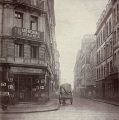 
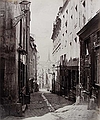 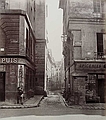 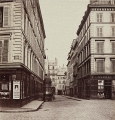  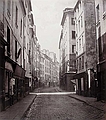 
 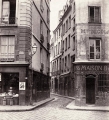   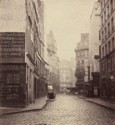 
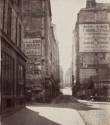    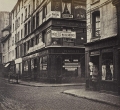 
     
    
PhVPhotohistory Visualizer (Be patient as this has 35 slides to load.)
Charles Marville[101] as an official city photographer for Napoleon III took a series of about 425 images of the older roads of Paris that were to be destroyed by Baron Georges-Eugène Haussmann's[102] redesign of the city during the 1860s. Civil engineering on this scale in a bustling capital city was controversial as it involved the relocation of considerable numbers of citizens but it was viewed as an essential part of Napoleon III's modernisation of Paris through the construction of the grand boulevards.
     
PhVCharles Marville: The rebuilding of Paris
 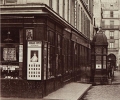
PhVCharles Marville: Rue Ollivier vers la rue St-Georges (ca 1868) - with the Gallery of Pierre Petit on the left
A further commission for Charles Marville was to document the street furniture of the city designed by architect Gabriel Davioud for Baron Haussmann. Marville made magnificent albumen prints of the newly installed gas lamps,[103] ironwork, pissoirs, Morris columns[104] for posting advertising, along the streets. When Paris installed gas lighting along the Champs De Elysees in 1828 it was the first European city to do so. The modernisation of under Baron Haussmann added 20,000 gas lamps[105] and Paris was indeed the "City of Light".
     
     
  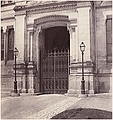   
     
     
     
     
     
     
     
     
     
     
     
     
     
     
   
PhVCharles Marville: Lampposts and gas lamps

PhVCharles Marville: Colonne Morris
     
     
 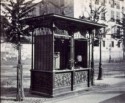 
PhVCharles Marville: Kiosks
     
     
PhVCharles Marville: Paris: Public urinals, pissoirs, vespasiennes
    
PhVCharles Marville: Ironwork
^ 412.25 Documentary > Les Travaux Publics de la France (1878-1882)
     
     
     
     

PhVPhotohistory Visualizer (Be patient as this has 25 slides to load.)
In the middle of the nineteenth century a large number of public works were being constructed in France for the benefit of society. The bridges, roads, canals, port improvements, lighthouses and beacons were under the direction of the Ministère des Travaux Publics and photographs were shown at the Universal Exhibition in Vienna (1873). It was decided to create a publication of the photographs and this was organised by James de Rothschild and additional photographs were added. The five volume Les Travaux Publics de la France (1878-1882)[106] stands as one of the great documentary studies but is little known.
The photographs taken show the marvels of the construction and to emphasise the grandeur they are largely devoid of people and are similar to the typological works of Bernd & Hilla Becher[107] which came much later.
This publication included many of the best regional photographers working in France from the middle of the 19th century including:
^ 412.26 Documentary > Delmaet & Durandelle: The Paris Opera (1861-1875)
About this photographer | Photographs by this photographer
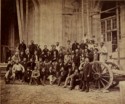   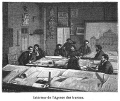  
     
     
     
     
     
     
     
   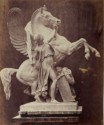  
     
  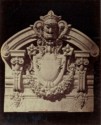   
     
   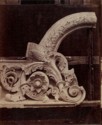  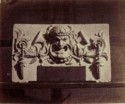
 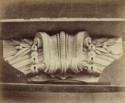 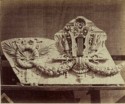   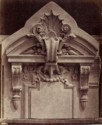
 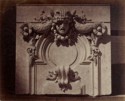 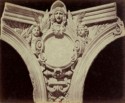 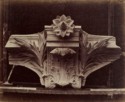 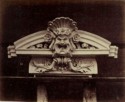 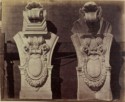
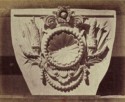   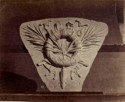  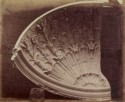
  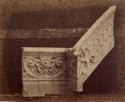  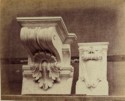 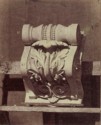
 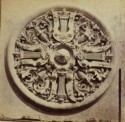  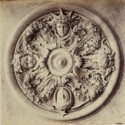 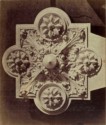 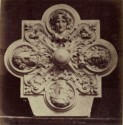
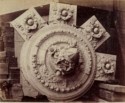 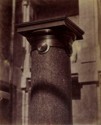   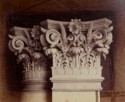 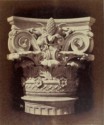
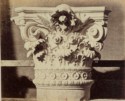 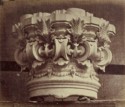 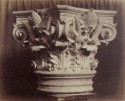 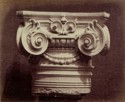 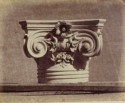 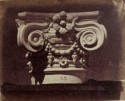
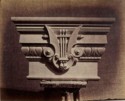 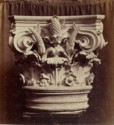 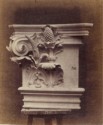   
     
     
   
PhVPhotohistory Visualizer (Be patient as this has 142 slides to load.)
The construction of the new Opera House in Paris in the nineteenth century was a statement in quarried stone of civic and national pride. On 29 December 1860 a resolution was passed that commenced a competition for suitable designs and plans. The unanimously chosen winner was Charles Garnier and by July 1861 the site had been selected and the following month the excavation of the foundations commenced. This was far from an ideal time for new public works with both the Franco-Prussian War and the following dark times of the Paris Commune coinciding with the construction. Despite this Garnier completed the project by December 1874 and in January 1875 it opened:
The opening of the New Opera House at Paris took place on Tuesday last. The Government had engaged the entire house for the opening night, which was, therefore, a state festivity, to which the diplomatic corps, the deputies, &c, were invited. The regular performances were to commence last evening with Hamlet.[108]
This vast undertaking was described in a contemporary account as follows:
The historian of the new temple of song rounds off his record with an array of not uninteresting figures, and with a few of these I too shall close. The gas-pipes, if connected, would form a pipe twenty-five kilometres in length; fourteen furnaces and four hundred and fifty grates heat the house; a battery of seventy cups generates electricity for the scenic effects; nine reservoirs and two tanks hold a hundred thousand litres of water, and distribute their contents through six thousand nine hundred and eighteen metres of piping, and there are twenty-five hundred and thirty-one doors, and seven thousand five hundred and ninety-three keys, which later M. Gamier delivered formally, but figuratively, I imagine, to M. Halanzier when the manager took possession of the premises.[109]
During the process Delmaet & Durandelle[110] photographed both the construction and the ornamental sculptures that decorated the immense building. Illustrations clearly based on their photographs were published in Le Nouvel Opera de Paris par Charles Garnier (1875-81)[111] and in Charles Nuitter's, Le Nouvel Opera (1875)[112].
     
 
PhVPhotographs by Louis-Emile Durandelle of the Paris Opera House and printed illustrations
One unusual feature of the documention of the construction of the Paris Opera was attention paid to photographing the magnificent decorative plasterwork.
     
 
PhVDecorative plasterwork
  
PhVRoundels
  
PhVColumns
     
     
 
PhVColumn capitals
     
 
PhVMasks
     
     
     

PhVBusts
The project remains as one of the key documentations of a nineteenth century architectural project. Durandelle recorded many other key projects in Paris including the construction of Sacre Coeur, the Hotel de Ville, and the Eiffel Tower.
Hyacinthe César Delmaet died in 1862 but the Delmaet & Durandelle partnership continued in name as his wife married Louis-Emile Durandelle. Sources vary on which photographs should be credited to which photographer and clarification on this is requested.
^ 412.27 Documentary > Louis-Emile Durandelle: Eiffel Tower (1887-1889)
About this photographer | Photographs by this photographer
   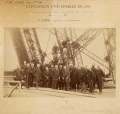  

PhVPhotohistory Visualizer
On 28 January 1887 the foundations were laid for the Eiffel Tower[113] was constructed in Paris for the Universal Exhibition of 1889. Many photographers including Edouard Baldus photographed its construction between 1887 and 1889.[114] Louis-Emile Durandelle made a series of carefully dated prints documenting the erection of the Eiffel Tower.
^ 412.28 Documentary > Eugène Atget: The streets and buildings of Paris
About this photographer | Photographs by this photographer
    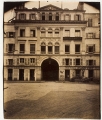 
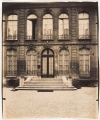     
    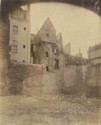 
     
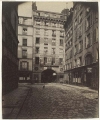     
  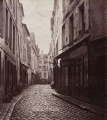 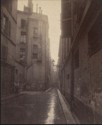  
   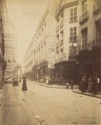 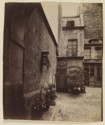 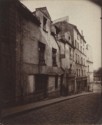
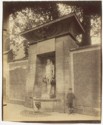     
     
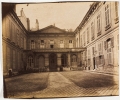 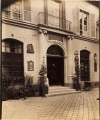 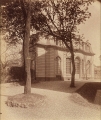  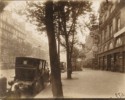 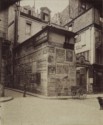
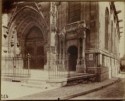  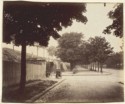
PhVPhotohistory Visualizer (Be patient as this has 63 slides to load.)
Eugène Atget is best known for his photographs late nineteenth and early twentieth century Paris that detail the streets, architecture, shops, parks and trees of the city.[115]

PhVStudio stamp for Eugène Atget (mid 1920s)
He sold photographs to archives and museum and to artists who used them to develop their painting skills. He lived very close to Man Ray in Paris who knew his work and purchased prints. In his final years his work was promoted by Berenice Abbott[116] and the New York gallery owner Julian Levy.
^ 412.29 Documentary > Jean-Philippe Charbonnier: Psychiatric hospitals (1954)
About this photographer | Photographs by this photographer
  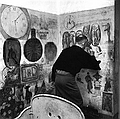   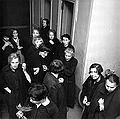
 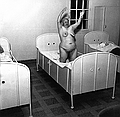 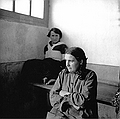   
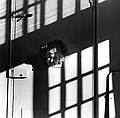     
     

PhVPhotohistory Visualizer (Be patient as this has 25 slides to load.)
In 1954 Jean-Philippe Charbonnier documented French Psychiatric hospitals and this exhibition includes rarely seen photographs from the series.
Some of the photographs were first published in Réalités in January 1955. Here a selection of the original reportage is shown followed by the magazine layouts - published in the magazine with two fluffy cats on the cover. It is interesting to see that a number of most powerful images were not published due to the sensitivities of the 1950s and that the eyes of the patients are at times masked to protect their identities.[117]
Spain
^ 412.30 Documentary > Martínez Sánchez: Public works in Spain (1860s)
     
     
     
     
PhVPhotohistory Visualizer (Be patient as this has 24 slides to load.)
Martínez Sánchez (1807-1874) was a photographer active in Spain during the 1860s when he took, with Juan Laurent, a series of albumen prints documenting public works including lighthouses, railway lines, factories, bridges and ports. This series was made at the request of Queen Isabel II to highlight the progress of Spanish infrastructure at the "Exposición Universal de París" (1867)
^ 412.31 Documentary > Juan Laurent: Public works in Spain (1860s)
About this photographer | Photographs by this photographer
     
     
     
     

PhVPhotohistory Visualizer (Be patient as this has 25 slides to load.)
Juan Laurent (1816-1886) was one of the outstanding photographers of 19th century Spain and Portugal. He took cityscapes, architectural studies, portraits along with photographic reproductions of artworks.[118]
Portugal
^ 412.32 Documentary > Emilio Biel: Construction of the Ponte Maria Pia in Porto (1876-1877)
About this photographer | Photographs by this photographer
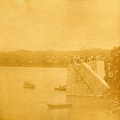     
  
PhVPhotohistory Visualizer
The Ponte Maria Pia is a railway bridge built by Gustave Eiffel in Porto, Portugal. Construction started on 5 January 1876 and completed on 4 November 1877. At the time of construction it was the longest arch bridge in the world at 160m. The stages of construction were photographed by Emilio Biel.[119]
^ 412.33 Documentary > Emilio Biel: Caminho de Ferro do Douro (ca. 1890)
About this photographer | Photographs by this photographer
     
PhVPhotohistory Visualizer
Albums documenting the construction of railways and their routes were often funded by the railway companies or their investors as a means of promoting commercial and passenger traffic and raising additional capital. This album from around 1890 showing the railway along the Douro Valley[120] in Portugal and consists of photographs by Emilio Biel who had photographed other civil engineering projects including the construction of the Ponte Maria Pia railway bridge built by Gustave Eiffel in Porto, Portugal (1876-1877).
The reasons why this album was created is uncertain but it fits within the tradition of photographic series completed by Édouard Baldus[121] in France for the Chemins de fer de Paris à Lyon et à la Méditerranée in the 1860s.
USA
^ 412.34 Documentary > Thomas Easterly: The Destruction of Big Mound (1853-1854)
About this photographer | Photographs by this photographer
     
     
PhVPhotohistory Visualizer
"The Big Mound" was the largest of a group of 27 Indian platform mounds built by the Mississippian culture (900-1300 A.D.). When the French first occupied the region it was called "La Grange de Terre" (Earthen Barn) and it was a man-made structure around 30 feet high and 150 feet long. As the city of St. Louis expanded it was decided to level "The Big Mound" and use it as a source of backfill and clay for brick-making.
Local Daguerreotypist Thomas Easterly[122] had photographed Big Mound. Fifth and Mound Streets, St. Louis in 1852-1854 and when the destruction of the mound was carried out in 1869 he took a series of daguerreotypes, an already archaic process, to document the event.[123]
^ 412.35 Documentary > Jacob A. Riis: How the Other Half Lives
About this photographer | Photographs by this photographer
     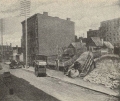
     
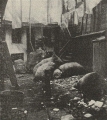 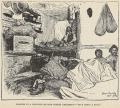    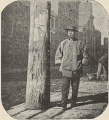
   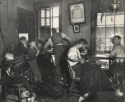  
   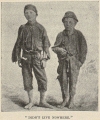 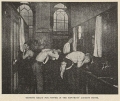 
  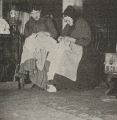  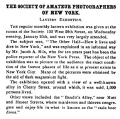
PhVPhotohistory Visualizer (Be patient as this has 35 slides to load.)
To publicize the social ills that would be described in his book How the Other Half Lives: Studies Among the Tenements of New York (1890) Jacob A. Riis[124] gave lectures using lantern slides of his photographs and here is an account of one he gave on 25th January 1888 in New York:
THE SOCIETY OF AMATEUR PHOTOGRAPHERS OF NEW YORK.
Lantern Exhibition.
The regular monthly lantern exhibition was given at the rooms of the Society. 123 West 30th Street, on Wednesday evening, January 25th, and was very largely attended.
The subject was, "The Other Half How it lives and dies in New York," and was explained in an informal way by Mr. Jacob A. Riis, who for ten years past has been the police reporter of the New York Press. The object of the exhibition was to picture to the audience the exact condition of the lowest phases of life as it at present exists in New York City. Many of the pictures were obtained by the aid of flash magnesium light.
The exhibition opened with a view of a well-known alley in Cherry Street, around which, it was said, 1,000 persons lived.
Other views included the "Bandit's Alley," near Mott and Hester Streets, where murderers and thieves congregate and enjoy life in what is known as the "stale beer dives."
"Bottle Alley," near Baxter Street, contained many children. A capital picture was that of an old tramp and thief in front of his broken-down shanty. About this Mr. Riis said he obtained the consent of the tramp to stand for ten cents, but he put his pipe in his pocket. So the tramp struck for higher pay, and on giving him five cents more he posed with his pipe as Mr. Riis desired. Another excellent picture illustrated how young boys first practice picking pockets.
The object of attack was a drunken man lying down in a stupor. The two boys were on each side overhauling the pockets with decided energy. They term the pickings their winnings, never call it stealing. At a place called "Hell's Kitchen," near Eleventh Avenue on Thirty-ninth Street, they experienced considerable difficulty, were attacked by some of the women with brickbats, which broke one of the plate-holders. The Italian rag-pickers' alley in South Fifth Avenue was shown; the women at work were suddenly dispersed by one word from the Italian proprietor before their pictures could be caught. An Italian tea-kettle was shown, somewhat large in size, stuffed with dirty linen. In the morning the kettle was used as boiler for boiling the clothes; at night it was employed for making tea.
A typical group of New York toughs called "The Growlers," was exhibited, hidden away under one of the dump docks on the East Side. They were factory hands, and got young boys to go after beer which they would drink in these places. A single picture of a young lad eight years old carrying a large pail of beer was quite effective. Other views of the back of tenement-houses showing the multiplicity of clothes-lines; of Baxter Street, crowded with humanity; of Mott and Pell Streets, showing Chinese life; the interior of a Chinese opium den, with the Chinamen laying off in their bunks under its influence: of the Chinese altar in the Joss-house, some of the latter being taken by aid of flash-light, were extremely interesting. Also pictures of the interior of the cheap lodging-houses, the Tombs, the Five Points House of Industry, the Catholic Protectory, with children playing around and Sister Irene in the foreground, who is said to have saved 13,003 children; also the exterior and interior of an uptown branch of the Boys' Lodging House of the Children's Aid Society, established through the beneficence of the late Mrs. Robert L. Stuart. All of the above were exceedingly interesting as showing the beneficent power which these institutions exert in this city.
Portraits of children side by side, of how they looked when taken from their hovels, and cruel and wretched parents, and after they were cleaned and cared for by Mr. E. Gerry's "Society for the Prevention of Cruelty to Children," illustrated more forcibly than any word picture the necessity and usefulness of that institution.
Several interesting portraits of noted thiefs and forgers, both male and female, taken from the Rogues' Gallery, were shown; Ex-Governor Moses, of South Carolina, had the handsomest looking face.
A fine picture, showing four or five detectives holding a refractory thief while he was having his photograph taken, was quite comical.
A good interior of a police office, showing the sergeant recording the facts, with the policeman standing near the rail, holding a foundling wrapped up in a black shawl, and messenger and others looking on, was quite effective and well lighted.
Several views of the Arabs in their hovels in Washington Street were exhibited. The women lay around on the floor without any bedding, and were completely embedded and begrimed with dirt. These were secured by aid of the flash-light. There were also two or three excellent interiors of the School for Blind Children.
The exhibition terminated with several excellent views of the New York Morgue, interior of Bellevue Hospital, exterior and interior of the Penitentiary on Blackwell's Island, of the Lunatic Asylum on Ward's Island, and of the burying ground on Hart's Island.
Mr. Riis related many interesting episodes and facts. It was hard to realize the enormity of the degradation and poverty constantly present in the great city. He remarked that four thousand children were barred out from the public schools, because there was not room enough to accommodate all who could attend.
At 10 o'clock the entertainment terminated.[125]
^ 412.36 Documentary > Jacob A. Riis: How the Other Half Lives - Book covers
About this photographer | Photographs by this photographer
     
 
PhVPhotohistory Visualizer
Towards the end of the nineteenth century in the United States Jacob Riis (1849-1914) and Lewis Hine (1874-1940) were committed to social change. When Jacob Riis published his first book, How the Other Half Lives on the overcrowded New York slums in 1890 it was a damning statement on societal ills.[126] The book included seventeen halftone illustrations from photographs and a further nineteen hand drawings.

PhVDetroit Publishing Co.: New York - Mulberry Bend (ca. 1900)
The journalist and novelist Stephen Crane (1871-1900) published Maggie: A Girl of the Streets[127] in 1893 and the following year he wrote the article Experiment in Misery when he dressed as a bum and spent a night in a flophouse.[128]
^ 412.37 Documentary > Francis Benjamin Johnston: Hampton Album (1899-1900)
About this photographer | Photographs by this photographer
     
     
   
PhVPhotohistory Visualizer (Be patient as this has 16 slides to load.)
In 1899 Francis Benjamin Johnston was commissioned by Hollis Burke Frissell to photograph the Hampton Normal and Agricultural Institute in Hampton, Virginia.[129] This school of African Americans and Native Americans students had been founded in 1868 following the American Civil War (1861-1865) to provide education to freedmen. This series of photographs captures the everyday life of the school and was shown at the Paris Exposition Universelle in 1900.[130]
^ 412.38 Documentary > Lewis W. Hine: The reform of child labour in America
About this photographer | Photographs by this photographer
    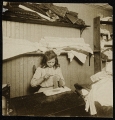
PhVPhotohistory Visualizer
As the number of children employed in industrial occupations in the United States was increasing in the late nineteenth and early twentieth centuries so there was a reaction against it based on health, educational, social and religious rationales. Edgar Gardner Murphy (1869-1913), who had served as priest of the Episcopal Church for twelve years, saw the dangers of unfettered child labor and proposed a National Child Labor Committee[131] bringing together different groups with similar motivations.
On 25th April 1904 a meeting was held at Carnegie Hall in New York City to address the plight of working children. It was at that meeting that the National Child Labor Committee (NCLC) was established. By 1907 the organisation had gained considerable support and it was charted by an Act of Congress.
To raise public awareness in early 1908 they hired Lewis Hine to photograph working children and it was appreciated that his images and supporting notes would serve as documentary evidence of the appalling working conditions of young workers. By 1912 a Children‘ Bureau was established in both the U.S. Department of Commerce and the U.S. Department of Labor which indicated progress but laws were introduced at the state or city level resulting in a patchwork of differing standards and enforcement. It was not until Fair Labor Standards Act of 1938 that child labor was effectively banned or regulated nationwide.
Lewis Hine[132] traveled through the United States as an investigator and a photographer for the National Child Labor Committee (NCLC) and his photographs were an impetus in promoting legislation to restrict child labor. To gain access to factories Lewis Hine pretended to be a fire inspector or a salesman as owners had no desire to have proof of their actions, which although legal were morally unjustifiable. The Keating-Owen Child Labor Act[133] of 1916 was the first attempt but subsequent rulings, supported by powerful industrial lobbies, prevented its effectiveness and it was not until the Fair Labor Standards Act was passed by Congress on 25th June 1938 that minimum ages for the employment of children could be enforced. It was through the photographic evidence of Lewis Hine that society was forced to recognize the injustices and eventually to address them with appropriate laws.
    
PhVLewis W. Hine: Workers in cotton mills
     
PhVLewis W. Hine: News boys and girls
   
PhVLewis W. Hine: Agricultural labour
The importance of these photographs is highlighted in a letter that Owen Lovejoy (former director of the NCLC - National Child Labor Committee and Associate Director of the American Youth Commission) wrote to Lewis Hine on 21 July 1938:
Beginning in 1905 with your first service to the National Child Labor Committee when you traveled this country from end to end discovering and exhibiting examples of types of children and youth in various forms of labor on through to the more humane days when the littlest ones were emancipated and you and I both felt we might turn our attention in another direction, you would have a pictorial document of rare interest and one which no one can duplicate. In my judgment the work you did under my direction for the National Child Labor Committee was more responsible than any or all other efforts to bring the facts and conditions of child employment to public attention. The evils inherent in the system were intellectually but not emotionally recognized until your skill, earnestness, devotion, vision and artistic finesse focused the camera intelligently, sympathetically and effectively on social problems involved in American industry.
Cordially yours, Owen R. Lovejoy[134]
In 1954, to commemorate its fiftieth anniversary, the National Child Labor Committee presented to the Library of Congress official records, correspondence, speeches, reports, press releases, and clippings from the period 1904 to 1953. This resource is regarded as one of the most significant documentary projects in the history of photography.
^ 412.39 Documentary > Lewis W. Hine: Empire State Building (1929-1931)
About this photographer | Photographs by this photographer
     
     
     
     
     
    
PhVPhotohistory Visualizer (Be patient as this has 35 slides to load.)
Lewis W. Hine, who had already documented the use of child labour in America [135], photographed the construction of the Empire State Building in New York City (1929-1931) and his series was published in his book Men at Work.[136] In this book Hine summed up his position:
Cities do not build themselves, machines cannot make machines....We call this the Machine Age. But the more machines we use the more do we need real men to make and direct them....I will take you into the heart of modern industry...where the character of the men is being put into the motors, the airplanes, the dynamos upon which the life and happiness of millions of us depend.[137]
  
PhVLewis W. Hine: [Man at work - Empire State Building]
^ 412.40 Documentary > Margaret Bourke-White: Otis Steel Co. (1928-1929)
About this photographer | Photographs by this photographer
     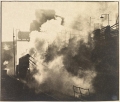
   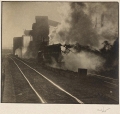  

PhVPhotohistory Visualizer
Margaret Bourke-White studied photography at the Clarence H. White School of Photography and was prepared to carry out assignments that were normally male-dominated. Her publication on the The Otis Steel Company - Pioneer, Cleveland. Ohio is an outstanding example of the use of a Pictorialist style applied to documentary photography.[138] The same approach was used by Doris Ulmann, who also studied at the Clarence H. White School of Photography, when she took the photographs for Roll, Jordan, Roll that was published in 1933.[139]
One of Bourke-White's clients was Otis Steel Company. Her success was due to her skills with both people and her technique. Her experience at Otis is a good example. As she explains in Portrait of Myself, the Otis security people were reluctant to let her shoot for many reasons: First, steel making was a defense industry, so they wanted to be sure national security was not affected. Secondly, she was a woman and in those days people wondered if a woman and her delicate cameras could stand up to the intense heat, hazard, and generally dirty and gritty conditions inside a steel mill. When she got permission, the technical problems began. Black and white film in that era was sensitive to blue light, not the reds and oranges of hot steel—she could see the beauty, but the pictures were coming out all black. She solved this problem by bringing along a new style of magnesium flare (which produces white light) and having assistants hold them to light her scenes. Her abilities resulted in some of the best steel factory pictures of that era, and these earned her national attention.[140]
^ 412.41 Documentary > Doris Ulmann: Roll, Jordan, Roll (1933)
About this photographer | Photographs by this photographer
 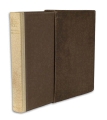    
     

PhVPhotohistory Visualizer
Between 1901 and 1903 Doris Ulmann did teaching training with Lewis Hine and she later took photography classes with Clarence H. White who was a significant figure in the teaching of Pictorialism but who also appreciated the trend towards Modernism. Doris Ulmann, who came from an affluent white New York family, broke the colour barrier at a time when to do so was highly unusual. She took portraits of African Americans living in rural poverty in South Carolina.[141] Her subjects....
"included former slaves and their descendents on the Gullah coastal region of South Carolina." [142]
The photographs were published in Roll Jordan Roll[143] (1933) accompanied by text by Julia Peterkin. The photographs were hand-pulled copper photogravures that have the soft tones beloved by Pictorialists. The risk here is that the softness of photogravure has a tendency towards nostalgia for a rural past and this is at variance with a project that was documentary in nature and required detachment. In 1930 Doris Ulmann wrote:
"A face that has the marks of having lived intensely, that expresses some phase of life, some dominant quality or intellectual power, constitute for me an interesting face. For this reason, the face of an older person, perhaps not beautiful in the strictest sense, is usually more appealing than the face of a younger person who has scarcely been touched by life."[144]
^ 412.42 Documentary > FSA - Farm Security Administration: Photographers
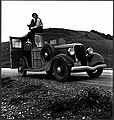   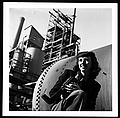  
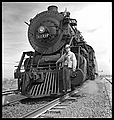     
     
PhVPhotohistory Visualizer (Be patient as this has 18 slides to load.)
The FSA - Farm Security Administration[145][146] in the USA included a number of photographers who created iconic images of the Great Depression, the human costs of the Dust Bowl[147] and the legacy of poverty and lack of work.
^ 412.43 Documentary > FSA - Farm Security Administration: Examples
     
     
     
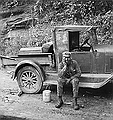     
  
PhVPhotohistory Visualizer (Be patient as this has 27 slides to load.)
The photographs taken under the auspices of the FSA - Farm Security Agency[148][149] in the United States and associated Federal programs during the 1930s and into the 1940s remain one of the most significant, and best known, with the genre of Great Depression and devastated on the Great Plains by drought, black blizzards, sharecropping, tenant farming, and foreclosed bank loans that made life untenable in large tracts of the country. Mass migrations of rural poor sought out work and places to re-establish lives. This is the period of The Grapes of Wrath (1939) in which the fictitious Joad family struggle to survive.[150].
Roy Stryker provided the leadership to the photographic branch of the FSA and brought together a varied group of personalities some who responded well to being set projects and timelines and others who were more difficult to control. The role of the photographic side of the FSA was to create an image bank that could be used by the press, government departments and agencies.
If the photographers at the time appreciated the long term impact of their work is debatable.[151] What has occurred over the intervening years is an increasing interest in history and photography - these combined with PBS programs[152] have made the material better known and it serves as the raw visual material for innumerable school and university projects. Another factor, which is often overlooked, is the cost of reproductions for publishing - as FSA photographs were taken under the auspices of the Federal government they are copyright free meaning there is no cost to publish. This means that it is economically advantageous to include them in publications in the place of other images where there are costs.
^ 412.44 Documentary > FSA - Farm Security Administration - OWI: Early colour
     
   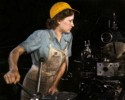 
PhVPhotohistory Visualizer
Over recent years there has been an increase in interest in early colour photography and there are now some excellent histories.[153] Some of this has concentrated on the Autochrome[154][155] as the hundredth year anniversary of its release in 2007 but more generally there is a reaction against the simplicity of saying that the use of colour became accepted because of exhibitions of the work of photographers like Stephen Shore, William Eggleston and others. It may be true that they are significant in the acceptance within American fine art photography exhibitions but to understand the context the analysis of archives is necessary and that is now happening.
The FSA - Farm Security Administration[156][157] and related Federal organizations in the USA took many of the photographs of the 1930s and 40s that are the "American Memory"[158] - this project within the Library of Congress is aptly named as it brings together all forms of original source media. Within the archives there are a number of colour slides by Russell Lee, John Vachon, Jack Delano and others taken in the early 1940s that hint of the significance that colour would have for documentary photography,
^ 412.45 Documentary > Berenice Abbott: Changing New York
About this photographer | Photographs by this photographer
     
    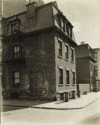 
     
     
    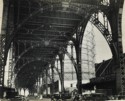 
     
     
  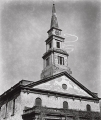   
     
     
   
PhVPhotohistory Visualizer (Be patient as this has 64 slides to load.)
Berenice Abbott had known Eugène Atget[159] in Paris and admired and promoted his work after his death in 1927. She saw the significance of detailed documentary projects that preserved the architectural heritage of changing urban centers.

PhVConsuelo Kanaga: Berenice Abbott with view camera (ca. 1935)
In 1935 she proposed her project "Changing New York" to the Federal Art Project (FAP)[160] which supported unemployed artists and those with related skills during the Great Depression. Berenice Abbott's work resulted in the book Changing New York (1939) with an introduction by art critic Elizabeth McCausland.[161][162]
     
    
PhVBerenice Abbott: Shop fronts
Douglas Levere returned to some of the locations that Berenice Abbott had photographed over sixty years earlier to complete a rephotographic project to capture how New York had changed.[163]
^ 412.46 Documentary > W. Eugene Smith: The Pittsburgh Project
About this photographer | Photographs by this photographer
     
     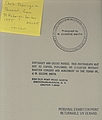
PhVPhotohistory Visualizer
W. Eugene Smith (1918-1978)[164] is justifiably remembered as a master of the photo-essay and left a legacy with LIFE magazine of memorable pieces that will be found in any significant history of photography. His photo-essays in LIFE included "Spanish Village" (9 April 1951), "Country Doctor" (20 Sept 1948), "Schweitzer" (15 Nov 1954) and the environmental catastrophe of "Minamata" (2 June 1972) and on the last of these he did a book with his second wife Aileen.[165]
In March 1955 Eugene Smith, now with Magnum commenced a project for Stefan Lorant[166] to take a hundred photographs for the book project "Pittsburgh: Story of an American City" to commemorate the bicentennial of the industrial city.[167] The project was supposed to take three weeks but it lasted until August and instead of the 100 photographs required Eugene Smith had taken between 11,000, 17,000 or possibly 21,000 negatives.[168] The need to make darkroom prints to assist in the editing process was immediate and James Karales and Howard Feinstein[169] performed the monumental task working day and night. The Smith's house in Croton-on-Hudson, New York, was filled with boards covered with prints as an attempt the edit the debt-laden project continued with the help of two Guggenheim fellowships.
Sam Stephenson, biographer of Eugene Smith, said:
"He really thought that when he finished his Pittsburgh project people were going to look at it and change their behaviour. You know, a culture was going to be changed by what he was showing. When he came here to Pittsburgh he saw nature, this extraordinary geographic environment and the heaviest industry America ever had. Immigrants from all over Europe were here. There was destruction and construction. There was wealth and poverty. There were these beautiful rivers. And it all came together in this one bundle in Pittsburgh."[170]
The "Pittsburgh Project" was published in an incomplete form in Popular Photography's Photography Annual in late 1958 but it was far from the all-embracing vision Eugene Smith desired. The project had grown from a three week assignment for Magnum into a three year project that was never completed to his satisfaction.
In 1964 the book edited by Stefan Lorant Pittsburgh: The Story of An American City was published including over 1,000 photographs by Eugene Smith, Margaret Bourke-White and others.[171]
^ 412.47 Documentary > Introduction to New York City Photo League
     
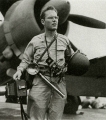    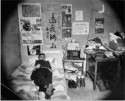 
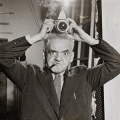   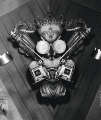 
PhVPhotohistory Visualizer (Be patient as this has 17 slides to load.)
The New York City Photo League[172] was founded in 1936 by Sol Libsohn and Sid Grossman and operated until 1951 when it was effectively forced out of operation during the anti-communist witch-hunts of Senator Joseph McCarthy. During the Cold War in the late 1940s any organizations with left-wing sympathies which documented union issues were deemed to be politically suspect and Sid Grossman was documenting such activities.[173]
In its heyday the membership, and those who exhibited, included such luminaries as:
Some of the meetings were photographed by Harold Feinstein.
New York City Photo League was a place where education and mentorship was available, a darkroom, photographic exhibitions were mounted and guest speakers such as Paul Strand, Henri Cartier-Bresson, Roy Stryker who was notable for his FSA - Farm Security Administration, and Berenice Abbott who had helped preserve the legacy of Eugène Atget and documented New York in her Changing New York series. With hindsight the influence of the League was far wider than its membership as it included photo-historians Beaumont and Nancy Newhall - it was the popular work by Beaumont Newhall, The History of Photography from 1839 to the Present Day[177] (1949) that would influence all one-volume histories of photography that followed.
The New York City Photo League was pivotal in establishing a community of those interested in photography - it supported social activism, individuals preserved photographic heritage such as Walter Rosenblum with the work of Lewis Hine, it mounted exhibitions including one on Weegee, it educated and provided community at at time when photography was rarely accepted within museums and there were no photographic galleries.
When a selection of works taken by the photographers is shown together it is a mural of the under class of society. The photographers had lived through the Great Depression in the United States and some, such as W. Eugene Smith, had active service during the Second World War, they had witnessed hardship and the oppression of minorities first-hand and their photographs portrayed the injustice.
   
PhVJack Delano
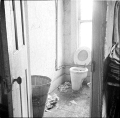
PhVArnold Eagle
   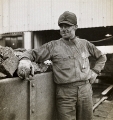
PhVMorris Engel

PhVSid Grossman
  
PhVClemens Kalischer
  
PhVConsuelo Kanaga
     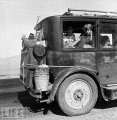
PhVDorothea Lange
 
PhVLisette Model
 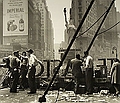   
PhVRuth Orkin
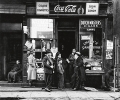
PhVWalter Rosenblum
 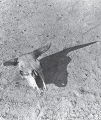  
PhVArthur Rothstein
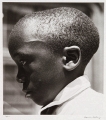   
PhVAaron Siskind
  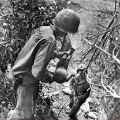  
PhVW. Eugene Smith
  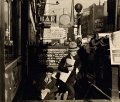 
PhVLou Stoumen
  
PhVJohn Vachon
 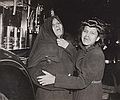  
PhVWeegee
 
PhVDan Weiner
  
PhVBill Witt
    
PhVMarion Post Wolcott
 
PhVMax Yavno
^ 412.48 Documentary > Danny Lyon: The Bikeriders (1968)
About this photographer | Photographs by this photographer
     
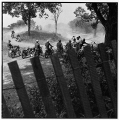     
     
  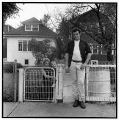   
     
     
     
     
  
PhVPhotohistory Visualizer (Be patient as this has 51 slides to load.)
The 1968 book The Bikeriders[178] featured photographs by Danny Lyon, one of the most important documentary photographers and filmmakers to come of age in the 1960s, which chronicle the activities of the Chicago Outlaws motorcycle club from 1963 to 1967. Lyon became a member of the Outlaws and documented the daily lives of its members from the seat of his Triumph motorcycle, equipped with a Nikon, a Rolleiflex and a seven-pound portable tape recorder. In 1968, his photographs were published in the landmark book, The Bikeriders, which not only launched his career, but also introduced motorcycle counterculture to mainstream America, paving the way for the film Easy Rider. The book was so influential that it was republished twice, in 1998 and 2003.
With the publication of The Bikeriders, at the age of 26, Lyon pioneered a new form of documentary photography in which the photographer was both a participant and an observer. Unlike his mentor, the influential photographer Robert Frank, who photographed mainstream America in the 1950s from the critical perspective of the outsider, Lyon worked from the inside photographing those on the margins. His direct engagement with his subjects provided a meaningful alternative to the photojournalism practiced by LIFE magazine and set him apart from the new generation of street photographers like Bruce Davidson,[179] Garry Winogrand[180] and Lee Friedlander. The juxtaposition of interviews of the Outlaws, together with Lyon’s beautifully composed photographs in The Bikeriders, also provided a new model for the photography book.
During this period Lyon also marched against segregation as the first official photographer for SNCC (the Student Non-Violent Coordinating Committee); documented the destruction of timeworn buildings in lower Manhattan to make way for the Twin Towers; and devoted months to befriending and photographing the inmates of Texas maximum security prisons, including the notorious death-row “Walls Unit” at Huntsville Prison. Since the 1960s, Lyon has undertaken diverse projects publishing more than 20 books, most recently, Deep Sea Diver: An American Photographer's Journey in Shanxi, China (2011). Lyon is also an accomplished documentary filmmaker with over a dozen films to his credit. He has been the subject of over fifty solo exhibitions, including retrospective exhibitions at the Whitney Museum of American Art (2007-8) and The Menil Collection (2012). His work is collected by museums in the United States and Europe, including the American Museum of Modern Art, Smithsonian Institute; the Corcoran Gallery of Art, the Folkwang Museum, The Museum of Fine Art, Houston, The Museum of Modern Art, the Art Institute of Chicago, The Metropolitan Museum of Art, and more.
Throughout his long and productive career, Danny Lyon has remained uncompromising in his commitment to giving voice to those who might otherwise not be heard.[181]
^ 412.49 Documentary > Danny Lyon: Conversations with the Dead (1971)
About this photographer | Photographs by this photographer
     
     
     
     
     
     
     
     
     
     
     
     
     

PhVPhotohistory Visualizer (Be patient as this has 79 slides to load.)
Danny Lyon has a rich body of work going back to the 1960s with his masterful documentary The Bikeriders[182] which combined interviews with the participants in their own words along with the photographs. The connection between the text and the photographs was exemplified by earlier books such as Dorothea Lange's photographs and the writing of Paul Schuster Taylor in An American Exodus: A Record of Human Erosion[183] (1939). In Conversations with the Dead[184] Danny Lyon used interviews and stories written by prison inmates along with his photographs. There was no separation here between the visual and textual and each supported the other.
^ 412.50 Documentary > Larry Clark: Tulsa
About this photographer | Photographs by this photographer
     
 
PhVPhotohistory Visualizer
The American Dream of the 1950s and 60s of neat suburbia and the acquisition of ever-increasing numbers of possessions was fractured by more liberal Hippy culture and challenges to all forms of government and authority. The Vietnam War (1961-1975) and the continuing Cold War (1945-1991) was affecting a generation born during around the Second World War (1939-1945) who did not share the same values as their parents. Larry Clark was born in 1943 in Tulsa, Oklahoma, and was a part of this group. His photographs documented his own world of male adolescents in his home town during the time of Midnight Cowboy[185] (1969) and Easy Rider[186] (1969). The films were about outsiders, drugs, male prostitution and issues that were not shown in polite society. Larry Clark saw, and participated in, this largely hidden world of sex, drugs, guns and violence - by photographing his community he discarded all artifice and showed a troubled community with blunt force. His book Tulsa,[187] which included photographs Clark had taken from 1963 onwards was autobiographical and raw - this was far from the humanistic photography of Henri Cartier-Bresson or Robert Doisneau it had was a personal view of a netherworld which society was trying, and failing, to ignore.[188]
Larry Clark was awarded an NEA grant on the basis of Tulsa but his next project Teenage Lust[189] would take over ten years to be published because of his own heroin addiction and a period in prison.
^ 412.51 Documentary > Larry Clark: Teenage Lust
About this photographer | Photographs by this photographer
   
PhVPhotohistory Visualizer
Larry Clark had given a semi-autobiographical account of his social circle of drugs, guns and sex in his first book Tulsa[190] and he continued in a similar vein with his next book Teenage Lust[191]. He self-published in New York in 1983 with a further edition published in Tokyo in1987. The book dealt with his own sexual encounters from his Tulsa years accompanied by more recent work on the male hustlers and prostitutes of Time Square in New York.
Larry Clark has continued to explore issues of adolescence in his films.[192]
^ 412.52 Documentary > Documerica Project (1971-1977)
     
    
PhVPhotohistory Visualizer
Between 1971 and 1977 the Documerica Project[193] funded by the Environmental Protection Agency (EPA) in the USA hired freelance photographers including Danny Lyon, John Vachon, Arthur Tress and many others to document environmental issues, EPA activities and daily life of the 1970s. The archive of over 15,000 photographs, mostly in colour, has until recently been an under-used resource.
^ 412.53 Documentary > Allan Sekula: Fish Story
About this photographer | Photographs by this photographer
 
PhVPhotohistory Visualizer
Integrity
^ 412.54 Documentary > Image integrity in documentary photography and photojournalism
The questioning of the integrity of still images has been an increasing significant research topic with a need to examine global perspective on how different practitioners - photographers, editors, picture desks and curators view the subject. In June 2014 David Campbell announced a research project for World Press Photo to examine the issues within documentary photography and photojournalism.[194] Using a qualitative research methodology the project was designed to interview relevant people around the world to better answer the following research questions:
- What forms of manipulation are relevant to the integrity of the image? In addition to post-processing of negatives, RAW files or unprocessed JPEGs, it could also includes the framing, cropping, selection, captioning and contextualisation of images, among other issues. Should these dimensions also be considered and, if so, how?
- Is manipulation generally a growing problem? If so, how and why?
- Is post-processing itself a problem, or is post-processing a problem only when certain levels of changes are made? If so, how are the legitimate levels known or identified?
- What ethical guidelines and protocols relevant to the integrity of the image are followed by media organisations in different countries?
- What ethical guidelines relevant to the integrity of the image are promoted by professional media associations in different countries?
- Are there national, regional and cultural differences in the ethical guidelines, accepted standards, and current practices relevant to the integrity of the image? Are there any points of consensus on manipulation regardless of geographical or cultural differences?
- Are there different norms with regard to manipulation in different image genres? Are the norms for news and documentary the same as those for nature, sports, and portraits (staged and observed), or are their differences?
- What are the most effective means for the detection of manipulation?
- What sanctions exist with the media industry after manipulation is detected?
- What rules exist within major international photo contests relating to the integrity of the image?
The research was necessitated by entries to the World Press Photo Awards that had been manipulated and were therefore ineligible for the competition but the awareness of the rising numbers of such images has implications for genres where photographic integrity is vital. If the viewer expects truth and it is not provided trust in the media delivering the images is brought into question.
Conclusions
^ 412.55 Documentary > Tracking down the photographed
     
PhVPhotohistory Visualizer
Within documentary photography we are frequently left with the portrayed but with minimal or no evidence of their lives and biographical information. What happened to the children portrayed in the photographs Lewis Hine took as evidence for the reform of child labour in America? We can examine the 1908 photograph of Sadie Pfeiffer, Spinner in Cotton Mill, North Carolina where Lewis Hine provided notes for a photograph he took on 30 November 1908[195]:
Sadie Pfeifer, 48 inches high, has worked half a year. One of the many small children at work in Lancaster Cotton Mills.
We have accompanying notes and captions for many of the Farm Security Administration (FSA) but the quality of recordkeeping varied considerably between photographers and information has been lost over time. Researchers such as Joe Manning[196] have undertaken to track down the people photographed and their descendents of those photographed by Lewis Hine[197] and John Vachon[198] to provide oral histories - a postscript of lives portrayed.
With famous photographs such as Dorothea Lange's Human Erosion in California (Migrant Mother) [Nipomo, California] (1936), Alfred Eisenstaedt 's V.J. Day (1945) showing a sailor kissing a nurse in Time Square, Robert Doisneau's Le Basier de L'Hotel de Ville (1950) or Steve McCurry's Afghan refugee (taken in Peshawar, Pakistan) have well researched histories as considerable effort has been expended in tracking down the people involved.
    
PhVPhotographs with well researched histories
A photographic portrait is normally taken in a fraction of a second and the photographer moves on - outside of social science documentation the story stops with the shutter. After the event there is usually little or no research on what has happened to the people photographed and how their lives progressed and if the photograph affected them. With photography we get fragments of person's life.[199] It is when an image has public resonance that makes it gains sufficient traction for the search for further details to become a news story that it attracts the necessary resources to complete the story.
^ 412.56 Documentary > Photosensitive
PhotoSensitive[200] was founded by Toronto Star photographer Andew Stawicki in 1990 following a discussion with graphics editor Peter Robertson. Frustrated with the inability to tell detailed documentary stories within contemporary photojournalism they decided to create a non-profit with unpaid volunteer photographers to concentrate to a single project each year. Working in conjunction with others committed to social change PhotoSensitive photographers take photographs and then donate them to the organisations concerned. Projects have covered the homeless, the Hospital for Sick Children[201] in Toronto, the blind, child poverty, SARS, water,[202] First Nations, HIV/AIDS in Rwanda and cancer.[203] The resulting photographs are used in books, exhibitions and promotional materials to promote positive change.[204]
^ 412.57 Documentary > Understanding the creation and dissemination of documentary photography
Within a world with a 24 hour news cycle, worldwide access and limited attention spans traditional print media no longer funds a large number of time-intensive long form stories and photojournalism. All creators have their own means of almost instantaneous image distribution through private means such as personal websites and blogs and social media sites such as flicker, twitter and instagram. The advantages of these distribution channels go along with the fragmentation of the message through intensive competition and a scattering of content making finding content easier whilst disrupted the financial models of journalism that supported photojournalism and high quality documentary photography. To understand the flows of information the organisations that give grants and who is attempted to ensure the support and dissemination of photography that promotes social change the following model is proposed.
Overview
Examples: Center for Documentary Studies (Duke University), International Center of Photography, PhotoWings |
Foundations
Examples: Blue Alliance / Soros etc; |
| Non-profits | ↑ |
| Series |
A1 | ↑
A2 |
A3 |
B1 | ↑
B2 |
B3 |
| Photographers | A | B |
Each country, region or interest group will have its own model and where documentary photographers fit into it but at this stage the model is deliberately kept simple. Photographers also make personal decision about the series they will produce, the grants they apply for, contracts they take and how they dessiminate their work . They may do any combination of the following and most do:
- Work for hire
A photographer takes the photographs for a specific project and is paid accordingly on the completition of the work.
- Apply / Work for competitive grants
As the number of opportunities for photojournalists has declined because of changes in advertising in print media grants are increasingly competitive.
- Work on personal projects
With series funded and created by photographers they may publish them online or seek to sell them after completion.
^ 412.58 Documentary > Some thoughts on documentary photography and legacy
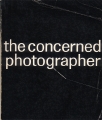 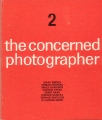
PhVPhotohistory Visualizer
In 1968 Cornell Capa edited his book The Concerned Photographer[205] which included photographs by Robert Capa, David Seymour ("Chim"), Andre Kertesz, Leonard Freed, Dan Weiner and Werner Bischof. Four years later Cornell Capa published a second volume The Concerned Photographer 2[206] with works by Marc Riboud, Roman Vishniac, Bruce Davidson, Gordon Parks, Ernst Haas, Hiroshi Hamaya, Don McCullin, and W. Eugene Smith.
With the deaths of so many photojournalists with vast visual legacies and capturing the major wars and news events of an age there was becoming a pressing need to establish frameworks for storing the legacies of documentary photographers and photojournalists. The breaking away from news agencies and magazines allows the freedom of new collaborative ventures such as Magnum but it didn't address the archives. As Cornell Capa wrote in 1968 his 1968 introduction to The Concerned Photographer:
What does happen to a photographer's work after his death - work that does not get commercial attention, that has no governmental or public subsidy for its maintenance and that is not known or celebrated enough to become part of a museum's permanent collection.[207]
Or more succinctly:
Man's witness to his time dies with him.[208]
Cornell Capa responded by creating the International Fund for Concerned Photography in 1966, mounting a number of exhibitions at Riverside Museum (New York) and publishing books that defined "concerned photography". The International Center of Photography (ICP)[209] in New York was founded in 1974 and is a flourishing educational resource, exhibition space and archive. With its close association with the early Magnum photographers it established extensive archives but there is an inherent risk that it hasn't solved the fundamental issue that Cornell Capa raised in 1968. It has done a remarkable, as have numerous other institutions, but there are many thousands of photographers alive today and few will have their archives preserved. The photographs of the individual photographers working in association with Magnum are responsible for their own material and this has left a complex legacy for Magnum with scattered archives and no single coherent index.
Documentary photographers who have been financially stable, fiscally prudent and concerned about their legacy have established their own trusts and foundations. The best, or the fortunate, will have their archives preserved by secure institutions but this will be a minute fraction of working photographers. For most their websites will cease within a few months of their deaths as payments are no longer made to hosting companies and their digital image files will lose context as the databases supporting them no longer function. Certainly the data might be embedded into the image file but that is only part of the story. There is a pressing need for national and international coordinated efforts to preserve the witnesses to our times.[210]
.
Footnotes
- Λ Online Etymological Dictionary
(Accessed: 18 January 2014)
- Λ The daguerreotypes of the devastation of the Hamburg fire were thought to have been taken by Carl Ferdinand Stelzner but are now known to be by Hermann Biow.
- Λ Thomas Annan is well known for his Old Country Houses of the Old Glasgow Gentry (1870) and for The Old Closes & Streets of Glasgow - engraved by Annan from Photographs taken for the City of Glasgow Improvement Trust which has gone through multiple editions and is a classic of documentary photography.
- Λ Archibald Burns & Thomas Henderson, 1868, Picturesque Bits from Old Edinburgh: A Series of Photographs, (Edomonston and Douglas, publishers to the Society of Antiquaries of Scotland, London: Simpkin, Marshall, and Company)
- Λ For Charles Marville and Paris - Jacqueline Chambord (ed.), 1981, Charles Marville: Photographs of Paris, 1852-1878, (French Inst/Alliance Francaise); Charles Marville, 1994, Marville Paris, (Hazan); Charles Marville, 1997, Charles Marville, (Centre National de Photo)
- Λ There are a large number of monographs on Eugène Atget and the standard by which all others are judged are the four volumes published by the Museum of Modern Art (1981-1985):
John Szarkowski & Maria Morris Hambourg, 1981, The Work of Atget. vol. 1: Old France, (New York: Museum of Modern Art)
John Szarkowski & Maria Morris Hambourg, 1982, The Work of Atget. vol. II: The Art of Old Paris, (New York: Museum of Modern Art)
John Szarkowski & Maria Morris Hambourg, 1983, The Work of Atget. vol. III: The Ancien Regime, (New York: Museum of Modern Art)
John Szarkowski & Maria Morris Hambourg, 1985, The Work of Atget. vol. IV: Modern Times, (New York: Museum of Modern Art)
- Λ Dorothea Lange, 1940, A Pageant of Photography, (San Francisco), p. 28
- Λ Daguerreotypes of the Acropolis in Athens were taken by Joseph-Philibert Girault de Prangey in 1842.
- Λ Scott Monument, Wikipedia
(Accessed: 18 January 2014)
- Λ Hill & Adamson, "The Scott Monument under Construction", 1843, Calotype print, medium, 20.1 x 14.9 cm, National Galleries of Scotland, Accession no. PGP HA 424
- Λ Hill & Adamson, "The Scott Monument", 1845, Calotype print, Arched top: 15.80 x 20.60 cm, National Galleries of Scotland, Courtesy of the National Galleries of Scotland (Accession no. PGP HA 434)
- Λ Hill & Adamson, "Scott Monument, masons", 1843, Salted paper print, 19.7 x 14.7 cm, Edinburgh City Libraries and Information Services, Library Item, 4131
- Λ Site of Lady Glenorchy's Church
(Accessed: 18 January 2014)
- Λ Hill & Adamson, "Lady Glenorchy's Chapel During Demolition", 1845 (ca), Salted paper print, 19.4 x 14.0 cm, George Eastman House, Record Id: 1976:0288:0102
- Λ Delores A. Kilgo, 1994, Likeness and Landscape: Thomas M. Easterly and the Art of the Daguerreotype, (University of New Mexico Press)
- Λ Background to The Historic American Buildings Survey (HABS)
(Accessed: 22 April 2019)
- Λ Propaganda is a means of mass persuasion that sets out to mould opinion through the use of information, ideas and rumour. The word doesn't have a negative connotation but the concept is generally perceived as negative.
- Λ For Lewis Hines work at the Empire State Building - Lewis W. Hine, 1932, Men at Work, (New York: The Macmillan Company); Lewis Hine, 1997, Men at Work, (Dover Publications); Freddy Langer, 2001, Lewis W. Hine: The Empire State Building, (Prestel Publishing)
- Λ For the context of Lewis Hine's work with the NCLC there are multiple studies including - Judith Mara Gutman, 1967, Lewis W. Hine and the American Social Conscience, (New York: Walker); Walter Rosenblum et al., 1977, America and Lewis Hine: Photographs, 1904–1940, (New York: Aperture); Daile Kaplan (ed.), 1992, Photo Story: Selected Letters and Photographs of Lewis Hine, (Washington, D.C.: Smithsonian Institution Press); Alison Nordström & Elizabeth McCausland, 2012, Lewis Hine, (D.A.P./Distributed Art Publishers, Inc.); Alexander Nemerov, 2016, Soulmaker: The Times of Lewis Hine, (Princeton University Press)
- Λ For a background to Jacob Riis - Alexander Alland Sr, 1993, Jacob A. Riis: Photographer and Citizen, (New York: Aperture); Janet B. Pascal, 2005, Jacob Riis: Reporter and Reformer, (Oxford University Press, USA); Bonnie Yochelson & Daniel Czitrom, 2007, Rediscovering Jacob Riis: Exposure Journalism and Photography in Turn-of-the-Century New York, (New York: New Press)
- Λ For the books of Jacob Riis - Jacob A.Riis, 1890, How the Other Half Lives: Studies Among the Tenements of New York, (New York: Charles Scribner’s Sons); Jacob A. Riis, 1892, The Children of the Poor, (London: Sampson Low, Marston, & Company)
- Λ Clark, Larry, 1971, Tulsa, (New York: Lustrum)
- Λ Danny Lyon,1968, The Bikeriders, (New York and London: The Macmillan Company and Collier-Macmillan Limited)
- Λ Greg Marinovich and Joao Silva, 2000, The Bang Bang Club, (Basic Books)
In 2010 the film The Bang Bang Club directed by Steven Silver was released.
- Λ Scott MacLeod, 12 September 1994, "The Life and Death of Kevin Carter", Time magazine
- Λ 2010 Haiti earthquake, Wikipedia
(Accessed: 27 July 2014)
- Λ Paul Hansen - Swedish Picture of the Year Award 2011 - The First Photo Won a Prize; The Second Made a Controversy Explode
(Accessed: 21 January 2013)
Please note: On the Internet there are interviews with many of the photographers who were present and their reactions to what happened. These should be read by those seeking to make judgements.
- Λ 1854, The New England Farmer, vol. 6, p. 453 - gives a brief contemporary account:
"The destructive fire which occured here on the 5th of July, 1853, destroyed most of the mills and elevators on the east side of the river. Through indomitable energy, however, they have all been rebuilt, upon a larger and more extensive scale, with all the modern improvements."
- Λ For the photographic work of George N. Barnard during the American Civil War - George N. Barnard, 1866 (ca), Photographic Views of Sherman's Campaign, Embracing Scenes of the Occupation of Nashville, the Great Battles around Chattanooga and Lookout Mountain, the Campaign of Atlanta, March to the Sea, and the Great Raid through the Carolinas, (New York: Press of Wynkoop & Hallenbeck); George N. Barnard, 1977, Photographic Views of Sherman’s Campaign, (New York: Dover Publications) [Preface by Beaumont Newhall]; Keith F. Davis, Keith (ed.), 1990, George N. Barnard: Photographer of Sherman’s Campaign, (Kansas City, MO: Hallmark Cards)
- Λ Geoffrey Amey, 1974, The collapse of the Dale Dyke Dam, 1864, (Cassell)
- Λ William Edward Kilburn's daguerreotype of the "Great Chartist Meeting on Kennington Common" (10 April 1848) is in The Royal Collection 2010, Her Majesty Queen Elizabeth II, RCIN 2932484. The original was purchased by Prince Albert in 1848.
- Λ Widely seen as M. Thibault more recent research has revealed his name to be Charles-François Thibault - Ihl, Olivier. (2018). In the Eye of The Daguerreotype. On the Rue du Faubourg-du-Temple in June 1848. 10.13140/RG.2.2.16383.25765.
- Λ The commerical opportunities of this personal tragedy were such that daguerreotype copies, stereoviews by George E. Curtis, and cartes de visite were sold.
- Λ 9/11: The Falling Man - Documentary (2006, 80 mins), Director: Henry Singer, IMDB
- Λ Adam Harrison Levy, The Falling Man: An Interview with Henry Singer
(Acccessed: 25 May 2014)
See also: "The Falling Man", Wikipedia
(Accessed: 26 May 2014)
- Λ Roger Fenton is the best known of Crimean War photographers and there is a considerable amount written about him - Gordon Baldwin et al., 2004, All the Mighty World: The Photographs of Roger Fenton, 1852–1860, (New Haven, CT: Yale University Press; New York: Metropolitan Museum of Art); Helmut & Alison Gernsheim, 1954, Roger Fenton: Photographer of the Crimean War, (London: Secker & Warburg);
John Hannavy, 1975, Fenton of Crimble Hall, (Boston: David R. Godine); Valerie Lloyd, 1988, Roger Fenton: Photographer of the 1850s, (London: South Bank Board); Richard Pare, 1987, Roger Fenton, (New York: Aperture).
For a rephotographic study - David R. Jones, 2012, In the Footsteps of Roger Fenton, Crimean War Photographer, (www.lulu.com: self-published)
- Λ Adrian J. Ebell, 1863, June, ‘The Indian Massacres and War of 1862‘, Harper's New Monthly Magazine, vol. 27, no. 157; Alan R. Woolworth, 1994, Summer, ‘Adrian J. Ebell, Photographer and Journalist of the Dakota War of 1862‘, Minnesota History, pp. 87-92
- Λ There is a large literature on Mathew Brady and he remains the best known photographer of the American Civil War even though he may not have taken many photographs himself. His role in financing teams of photographers was critical in providing the rich visual legacy we have of the war.
For a biography - Robert Wilson, 2013, Mathew Brady: Portraits of a Nation, (Bloomsbury)
Barry Britzker, 2003, Mathew Brady, (JG Press); James D. Horan, 1955, Mathew Brady: Historian With a Camera, (Bonanza); Roy Meredith, 1976, The World of Mathew Brady: Portraits of the Civil War Period, (Brooke House Publishers); Roy Meredith, 1982, Mathew Brady’s Portrait of an Era, (New York and London: W. W. Norton); Mary Panzer, 2001, Mathew Brady, (MA, Boston: Phaidon Inc); Theodore P. Savas, 2008, Brady's Civil War Journal: Photographing the War, 1861-65, (New York: Skyhorse Publications); George Sullivan, 1994, Mathew Brady: His Life and Photographs, (New York, Cobblehill/Dutton)
- Λ Alexander Gardner, 2003, Gardner’s Photographic Sketchbook of the American Civil War, (New York: Delano Greenidge); Alexander Gardner & E.F. Bleiler, 1959, Gardner‘s Photographic Sketch Book of the Civil War, (New York, Dover Publications); Brooks Johnson, 1991, An Enduring Interest: The Photographs of Alexander Gardner, (Norfolk, VA: Chrysler Museum)
- Λ Some of the most famous photographs taken by Timothy O'Sullivan of the American Civil War are included in - Alexander Gardner, 2003, Gardner’s Photographic Sketchbook of the American Civil War, (New York: Delano Greenidge)
- Λ Alois Löcherer, 1998, Alois Löcherer. Photographien 1845 - 1855, (Schirmer /Mosel Verlag Gm)
- Λ Delores A. Kilgo, 1994, Likeness and Landscape: Thomas M. Easterly and the Art of the Daguerreotype, (University of New Mexico Press)
- Λ The daguerreotypes of the devastation of the Hamburg fire were thought to have been taken by Carl Ferdinand Stelzner but are now known to be by Hermann Biow.
- Λ William M. Gouge, 1842, The Journal of Banking, from July 1841 to July 1842 (Philadelphia: J. Van Court), pp. 391-392
- Λ 1854, The New England Farmer, vol. 6, p. 453
- Λ Thomas Annan is well known for his Old Country Houses of the Old Glasgow Gentry (1870) and for The Old Closes & Streets of Glasgow - engraved by Annan from Photographs taken for the City of Glasgow Improvement Trust which has gone through multiple editions and is a classic of documentary photography.
For studies on the work of Thomas Annan - Roy McKenzie, 1992, ‘Thomas Annan and the Scottish Landscape: Among the Gray Edifices‘, History of Photography, vol. 16, no. 1, pp. 40; Anita Ventura Mozley, 1977, Thomas Annan: Photographs of The Old Closes And Streets of Glasgow 1868/1877, (New York: Dover Publications, Inc.) [With a supplement of 15 related views) with a new introduction by Anita Ventura Mozley. Published through the Cooperation of The International Museum of Photography / George Eastman House]; Ian Spring, 1996, ‘Midnight Scenes and Social Photographs: Thomas Annan's Glasgow‘, in Mancoff, Debra N. & Trela, DJ (eds.), Victorian Urban Settings: Essays on the Nineteenth-Century City and Its Contexts, pp. 195-213; Sara Stevenson, 1990, Thomas Annan 1829-1887, (Edinburgh: National Galleries of Scotland)
The book by Thomas Annan is included in - Martin Parr & Gerry Badger (2004) The Photobook: A History, volume 1, (Phaidon Press Limited)
- Λ Archibald Burns & Thomas Henderson, 1868, Picturesque Bits from Old Edinburgh: A Series of Photographs, (Edomonston and Douglas, publishers to the Society of Antiquaries of Scotland, London: Simpkin, Marshall, and Company)
The National Library of Scotland has a collection of salted paper prints by Archibald Burns.
- Λ For Charles Marville and Paris - Jacqueline Chambord (ed.), 1981, Charles Marville: Photographs of Paris, 1852-1878, (French Inst/Alliance Francaise); Charles Marville, 1994, Marville Paris, (Hazan); Charles Marville, 1997, Charles Marville, (Centre National de Photo)
- Λ For the books by Jacob A. Riis - Jacob A. Riis, 1890, How the Other Half Lives: Studies Among the Tenements of New York, (New York: Charles Scribner’s Sons); Jacob A. Riis, 1892, The Children of the Poor, (London: Sampson Low, Marston, & Company).
For the socio-political context and biographical details on Jacob A. Riis - Alexander Alland Sr, 1993, Jacob A. Riis: Photographer and Citizen, (New York: Aperture); Janet B. Pascal, 2005, Jacob Riis: Reporter and Reformer, (Oxford University Press, USA); Bonnie Yochelson, & Daniel Czitrom, 2007, Rediscovering Jacob Riis: Exposure Journalism and Photography in Turn-of-the-Century New York, (New York: New Press)
- Λ The book London Labour and London Poor was evidently rare quite soon after it was published in 1851 as in The Atheneum, no. 1407, Oct. 14, 1854, p. 1223 there was the following advert:
RARE WORK. A few Copies just ready of HENRY MATHEWS Celebrated and very Extraordinary Work, 'LONDON LABOUR AND THE LONDON POOR : a CycIopedia of Those that Work, Those that cannot Work, and Those that will not Work,' with Engravings of the Scenes and People described, copied from Daguerreotypes taken expressly for this Book by Beard. Prices [unclear on scan]. Each bound copy has at end the whole of the valuable "Answers to Correspondents arranged to be read uninterruptedly." EITHER DIVISION OF THE WORK SOLD SEPARATELY.
A quantity of Odd Numbers for completion of sets to 63rd number -(pages 432 of vol. II. and 199 of vol. III.). The Answers to Correspondents prepared for binding, all Advertisements, &c. attached on publication being excluded. Copies bound in manner rendering them more complete than any ever supplied, except by
G. Newbold, 8, Regent-street. Westminster.
N.B. Numbers bought - full price given - lists requested by post.
- Λ Naomi Rosenblum, 1984, A World History of Photography, (New York: Abbeville Press); Naomi Rosenblum, 2007, A World History of Photography, (New York: Abbeville Press) [4th edition]
- Λ Thomas Annan is well known for his Old Country Houses of the Old Glasgow Gentry (1870) and for The Old Closes & Streets of Glasgow - engraved by Annan from Photographs taken for the City of Glasgow Improvement Trust which has gone through multiple editions and is a classic of documentary photography.
For studies on the work of Thomas Annan - Roy McKenzie, 1992, ‘Thomas Annan and the Scottish Landscape: Among the Gray Edifices‘, History of Photography, vol. 16, no. 1, pp. 40; Anita Ventura Mozley, 1977, Thomas Annan: Photographs of The Old Closes And Streets of Glasgow 1868/1877, (New York: Dover Publications, Inc.) [With a supplement of 15 related views) with a new introduction by Anita Ventura Mozley. Published through the Cooperation of The International Museum of Photography / George Eastman House]; Ian Spring, 1996, ‘Midnight Scenes and Social Photographs: Thomas Annan's Glasgow‘, in Mancoff, Debra N. & Trela, DJ (eds.), Victorian Urban Settings: Essays on the Nineteenth-Century City and Its Contexts, pp. 195-213; Sara Stevenson, 1990, Thomas Annan 1829-1887, (Edinburgh: National Galleries of Scotland)
The book by Thomas Annan is included in - Martin Parr & Gerry Badger (2004) The Photobook: A History, volume 1, (Phaidon Press Limited)
An exhibition "Thomas Annan: Photographer of Glasgow" was held at The Getty Center, Los Angeles (13 May - 13 August 2017).
- Λ Anita Ventura Mozley, 1977, Thomas Annan: Photographs of The Old Closes And Streets of Glasgow 1868/1877, (New York: Dover Publications, Inc.), p. xii
- Λ William Young, (1900) The Old Closes & Streets of Glasgow - engraved by Annan from Photographs taken for the City of Glasgow Improvement Trust, With an Introduction by William Young, R.S.W., (Glasgow: James MacLehose & Sons)
- Λ Martin Parr & Gerry Badger (2004) The Photobook: A History, volume 1, (Phaidon Press Limited), p. 49
- Λ Anita Ventura Mozley, 1977, Thomas Annan: Photographs of The Old Closes And Streets of Glasgow 1868/1877, (New York: Dover Publications, Inc.), pp. xi-xii
- Λ © Photoseed & Alan Griffiths (2006) - Used with permission
- Λ Archibald Burns & Thomas Henderson, 1868, Picturesque Bits from Old Edinburgh: A Series of Photographs, (Edomonston and Douglas, publishers to the Society of Antiquaries of Scotland, London: Simpkin, Marshall, and Company)
The National Library of Scotland has a collection of salted paper prints by Archibald Burns.
- Λ Asa Briggs, ca. 1979, Iron Bridge to Crystal Palace: impact and images of the Industrial Revolution, (London: Thames and Hudson in collaboration with the Ironbridge Gorge Museum Trust)
- Λ Arts Council of Great Britain, 1965, Sir Joseph Paxton, 1803-1865: a centenary exhibition organized in association with the Victorian Society [by the] Arts Council of Great Britain, (London: The Arts Council)
- Λ Christopher Hobhouse, 1950, 1851 and the Crystal Palace; being an account of the Great Exhibition and its contents; of Sir Joseph Paxton; and the erection, the subsequent history and the destruction of his masterpiece, (London: Murray), p. 32
- Λ Patrick Beaver, 1970, The Crystal Palace, 1851-1936: a portrait of Victorian enterprise, (London: Hugh Evelyn Ltd.), p. 12
- Λ Christopher Hobhouse, 1950, 1851 and the Crystal Palace; being an account of the Great Exhibition and its contents; of Sir Joseph Paxton; and the erection, the subsequent history and the destruction of his masterpiece, (London: Murray), p. 39
- Λ Patrick Beaver, 1970, The Crystal Palace, 1851-1936: a portrait of Victorian enterprise, (London: Hugh Evelyn Ltd.), p. 47
- Λ Christopher Hobhouse, 1950, 1851 and the Crystal Palace; being an account of the Great Exhibition and its contents; of Sir Joseph Paxton; and the erection, the subsequent history and the destruction of his masterpiece, (London: Murray), p. 39
- Λ Patrick Beaver, 1970, The Crystal Palace, 1851-1936: a portrait of Victorian enterprise, (London: Hugh Evelyn Ltd.), p. 69
- Λ Henry Russell Hitchcock, 1952, The Crystal Palace: the structure, its antecedents and its immediate progeny: and exhibition, (Northampton, Massachusetts: Smith College Museum of Art), p. 27
- Λ Patrick Beaver, 1970, The Crystal Palace, 1851-1936: a portrait of Victorian enterprise, (London: Hugh Evelyn Ltd.), p. 79
- Λ Patrick Beaver, 1970, The Crystal Palace, 1851-1936: a portrait of Victorian enterprise, (London: Hugh Evelyn Ltd.), p. 79
- Λ Patrick Beaver, 1970, The Crystal Palace, 1851-1936: a portrait of Victorian enterprise, (London: Hugh Evelyn Ltd.), p. 37
- Λ Beaumont Newhall, 1982, The History of Photography: from 1839 to the present, (New York: Museum of Modern Art), p. 110
- Λ John Thomson & Adolphe Smith, [1877], Street Life in London, (London: Sampson Low, Marston, Searle and Rivington); Reprint - John Thomson & Adolphe Smith, 1969, Street Life in London, (New York: Bernard Blom) [Facsimile edition].
For the context - Jeff Rosen, 1993, ‘Posed as Rogues: The Crisis of Photographic Realism in John Thomson's Street Life in London‘, Image, vol. 36, no. 3/4, pp. 9-39; Emily Kathryn Morgan, 2014, Street Life in London: Context and Commentary, (MuseumsEtc)
- Λ John Thomson travelled widely and his books include works on Cambodia, China, Formosa, and Indo-China.
- Λ Yale Center for British Art, 2016, Art in focus: Relics of old London, (Yale Center for British Art), Gallery guide for an exhibition at the Yale Center for British Art, , May 11-August 14, 2016.
- Λ May 16, 1879, The Publisher's Circular, vol. 42, p. 366
- Λ George H. Birch, July-December, 1886, "Old London Relics", Walford's Antiquarian, vol. X, pp. 47-48
- Λ James Hinton, 2013, The Mass Observers: A History, 1937-1949, (Oxford University Press). Book description from Amazon (Accessed: 9 July 2013):
This is the first full-scale history of Mass-Observation, the independent social research organisation which, between 1937 and 1949, set out to document the attitudes, opinions, and every-day lives of the British people. Through a combination of anthropological fieldwork, opinion surveys, and written testimony solicited from hundreds of volunteers, Mass-Observation created a huge archive of popular life during a tumultuous decade which remains central to British national identity.
- Λ Bolton Worktown, Photography and Archives from the Mass Observation
(Accessed: 5 May 2014)
- Λ John L. Locke, 2010, Eavesdropping:An Intimate History, (Oxford University Press)
- Λ For collaborations between Walker Evans and James Agee - James Agee & Walker Evans, 1941, Let Us Now Praise Famous Men: Three Tenant Families, (Boston: Houghton Mifflin Company; Walker Evans & James Agee (introduction), 1966, Many Are Called, (Boston: Houghton Mifflin)
- Λ Hedy van Erp, "Life Worth Seeing" in Nick Hedges, 2014, Make Life Worth Living, (National Media Museum / The Library of Birmingham), p. 9
- Λ Nick Hedges, 2014, Make Life Worth Living, (National Media Museum / The Library of Birmingham), Afterword, p.110-111
- Λ Frank, Robert, 1958, Les Américains, (Paris: Delpire); Robert Frank, 1959, The Americans, (New York: Grove Press)
An American Journey: Revisiting Robert Frank's 'The Americans,' is a documentary written and directed by Philippe Séclier. 60 minutes.
- Λ John Bulmer, 2012, The North, (The Bluecoat Press)
- Λ 10 August 2010, "John Bulmer Interviewed", Professional Photographer
(Accessed: 27 December 2013)
- Λ For LIFE magazine - Stanley Rayfield, 1957, LIFE photographers: Their Careers and Favorite Pictures, (Doubleday); Constance Sullivan, 1978, Great Photographic Essays from Life, (Boston: New York Graphic Society)
- Λ For the classic photo-essays of W. Eugene Smith - William S. Johnson (ed.), 1981, W. Eugene Smith: Master of the Photographic Essay, (Millerton, NY: Aperture)
- Λ 10 August 2010, "John Bulmer Interviewed", Professional Photographer
(Accessed: 27 December 2013)
- Λ For the work of Bill Brandt in the 1930s - Bill Brandt, 1936, The English at Home, (London: B. T. Batsford Ltd.); Bill Brandt, 1938, A Night in London: Story of a London Night in Sixty-Four Photographs, (London, Paris & New York); Bill Brandt, 1938, Londres de nuit - London by Night, (Paris, London and New York: Arts et Métiers Graphiques, Country Life, and Charles Scribner's Sons)
- Λ The Great North Road was a route in the UK between London, York and Edinburgh.
- Λ Norman Webster, 1974, The Great North Road, (Bath: Adams and Dart)
- Λ Paul Graham Archive
(Accessed: 21 March 2016)
- Λ Paul Graham, 1983, A1: The Great North Road, (Bristol: Grey Editions)
- Λ The first editions of "The Americans" was published in French - Robert Frank, 1958, Les Américains, (Paris: Delpire) with an American edition in 1959. It slowly became an iconic project that influenced many documentary photographers.
- Λ Chris Killip, 2011, Seacoal, (Steidl and GwinZegal)
On the Chris Killip acquisitions at the Getty - Sarah Zabrodski, 2 October 2014
"This Just In: The Sublime in the Everyday: Chris Killip’s influential photographs of North East England, newly added to the Getty Museum’s collection, reveal human resilience in a ravaged landscape", The Getty Iris, [The online magazine of the Getty]
(Accessed: 17 October 2014)
- Λ Seacoal, 1985, (Amber Films)
Seacoal, Wikipedia
(Accessed: 7 November 2013)
- Λ Stanley Triggs, Conrad Graham, Brian Young & Gilles Lauzon, 1992, Pont Victoria: un lien vital = Victoria Bridge: the vital link, (Montreal: McCord Museum of Canadian History) [Exhibition catalogue]
- Λ Examples of where there are surviving William Notman photographs and other modes of illustration in the McCord Museum of Canadian History (Montreal, Canada) include:
example 1: Silver salts on glass - Gelatin dry plate process, "Large boulder raised from coffer dam, Victoria Bridge, Montreal, QC" (VIEW-7570.0) / Ink on paper - Wood engraving, "The Removal of a Large Boulder during the Construction of the Victoria Bridge" (M15934.21)
example 2: Silver salts on paper mounted on card - Albumen process, "Framework of tube and staging no. 8, Victoria Bridge, Montreal, QC" (N-0000.193.127) / Print, "Laying Bottom of Tube" (M15934.30)
example 3: Silver salts on paper mounted on card - Albumen process, "Centre tube, Victoria Bridge, Montreal, QC" (N-0000.193.135) / Coloured ink on paper, "Centre tube in progress" (M15934.28)
At times there are differences in the numbers of people shown and their positions and this might indicate an amount of artistic license by the artist when copying the photographs.
- Λ The New World in 1859 being the United States and Canada, Illustrated and Described (London: H. Bailliere, ca. 1859), Part Third, Upper and Lower Canada
- Λ December, 1860, "Imperial Asylum at Vincennes for Convalescent Workman", The Medical News and Library, vol. XVIII, no. 216, pp. 184-185
- Λ For Charles Marville and Paris - Jacqueline Chambord (ed.), 1981, Charles Marville: Photographs of Paris, 1852-1878, (French Inst/Alliance Francaise); Charles Marville, 1994, Marville Paris, (Hazan); Charles Marville, 1997, Charles Marville, (Centre National de Photo)
The work of Charles Marville is highly regarded and exhibitions of his work are mounted such as - "Charles Marville: Photographer of Paris" (The Metropolitan Museum of Art, NY, 29 January - 4 May 2014)
- Λ For the work of Baron Haussmann and the urban design of Paris - Stephane Kirkland, 2013 , Paris Reborn: Napoléon III, Baron Haussmann, and the Quest to Build a Modern City, (St. Martin's Griffin); Patrick Camiller & Michel Carmona, 2002, Haussmann: His Life and Times, and the Making of Modern Paris, (Ivan R Dee)
- Λ For the public lighting photographed by Charles Marville - Marie de Thézy, 1993, Charles Marville: Réverberes, (Paris: Paris Tête d'Affiche)
- Λ In France advertising columns are called Colonne Morris taking their name from Gabriel Morris, a printer, who held the concession for advertising in 1868.
(Accessed: 4 April 2014)
- Λ "Charles Marville: Photographer of Paris", The Metropolitan Museum of Art, NY (29 January - 4 May 2014)
(Accessed: 4 April 2014)
- Λ Les Travaux Publics de la France was published in five parts:
Volume I: Félix Lukas - Ponts et routes (Paris: J. Rothschild, 1878-1882) [Bridges and roads]
Volume II: Edourd-Charles-Romain Collignon - Chemins de fer (Paris: J. Rothschild, 1878-1882) [Railways]
Volume III: H. de Lagrene - Rivières et canaux (Paris: J. Rothschild, 1878-1882) [Rivers and canals]
Volume IV: Voisin-Bey - Ports de mer (Paris: J. Rothschild, 1878-1882) [Sea ports]
Volume V: Emile Allard - Phares et balises (Paris: J. Rothschild, 1878-1882) [Lighthouses and beacons]
- Λ There is a large literature on Bernd and Hilla Becher including - Bernd & Hiller Becher, 2004, Typologies of Industrial Buildings, (Cambridge, MA: MIT Press); Bernhard & Hilla Becher, 1970, Anonyme Skulpturen, A Typology of Technical Constructions, (New York: Wittenborn and Co.); Susanne Lange, 2006, Bernd and Hilla Becher: Life and Work, (The MIT Press)
- Λ The Academy, Issue 7, Jan 9, 1875, p. 51
- Λ Frederick A. Schwab, "A Temple of Song", Scribners Monthly, May, 1875, Volume X, no. 1, p. 20
- Λ The partnership of Hyacinthe César Delmaet (1828-1862) and Louis-Emile Durandelle (1839-1917). The name of the partnership continued long after the death in 1862 of Delmaet as his wife, Clemence Jacob, married Durandelle.
- Λ 1875-81, Le Nouvel Opera de Paris par Charles Garnier, (Paris: Ducher et Cie)
- Λ Charles Nuitter, 1875, Le Nouvel Opera (Paris: Libraire Hachette et Cie)
- Λ Joseph Harriss, 2008, The Tallest Tower: Eiffel And The Belle Epoque, (Unlimited Publishing LLC)
- Λ Joëlle Bolloch, 2008, The Eiffel Tower - Photography at the Musée d'Orsay, (5Continents)
- Λ There are a large number of monographs on Eugène Atget and the standard by which all others are judged are the four volumes published by the Museum of Modern Art (1981-1985):
John Szarkowski & Maria Morris Hambourg, 1981, The Work of Atget. vol. 1: Old France, (New York: Museum of Modern Art)
John Szarkowski & Maria Morris Hambourg, 1982, The Work of Atget. vol. II: The Art of Old Paris, (New York: Museum of Modern Art)
John Szarkowski & Maria Morris Hambourg, 1983, The Work of Atget. vol. III: The Ancien Regime, (New York: Museum of Modern Art)
John Szarkowski & Maria Morris Hambourg, 1985, The Work of Atget. vol. IV: Modern Times, (New York: Museum of Modern Art)
- Λ Clark Worswick, 2002, Berenice Abbott & Eugene Atget, (Santa Fe: Arena Editions)
- Λ In 2006 a 24 page booklet Jean-Philippe Charbonnier: HP hôpitaux psychiatriques was published by Le traitement contemporain n°4 in conjunction with gallery Agathe Gaillard.
- Λ For the photographs of Jean Laurent - Francisco Javier Rodríguez & José María Coronado (eds.), 2003, Obras públicas de España: Fotografías de J. Laurent, 1858–1870, (Ciudad Real); Isabel Tuda (ed.), 2005, Jean Laurent en el Museo Municipal de Madrid, vol. 1., (Madrid); Ignacio Gil-Díez Usandizaga (ed.), 2011, Las fotografias de J. Laurent (1816–1886) y La Rioja, (Logroño)
- Λ With thanks to Manuel Magalhaes for supplying the photographs.
- Λ The Douro Valley is the heart of the region where the grapes for the fortified wine Port are grown. It was photographed by one of the earliest photographers in Portugal - Joseph James Forrester (1809-1861) who drowned in the river.
- Λ Malcolm R. Daniel, 1994, The Photographs of Édouard Baldus, (New York: Metropolitan Museum of Art; Montreal: Canadian Centre for Architecture)
He is commonly referred to as "Edouard-Denis Baldus" but there is no trace of this name having been used during his lifetime. He was born "Eduard" and adopted the French spelling "Edouard" after moving to Paris. [Thanks to Malcolm Daniel for this information.]
- Λ Delores A. Kilgo, 1994, Likeness and Landscape: Thomas M. Easterly and the Art of the Daguerreotype, (University of New Mexico Press)
- Λ The daguerreotypes are in the Thomas Easterly Collection of the Missouri Historical Society.
- Λ For the books by Jacob A. Riis - Jacob A. Riis, 1890, How the Other Half Lives: Studies Among the Tenements of New York, (New York: Charles Scribner’s Sons); Jacob A. Riis, 1892, The Children of the Poor, (London: Sampson Low, Marston, & Company).
For the socio-political context and biographical details on Jacob A. Riis - Alexander Alland Sr, 1993, Jacob A. Riis: Photographer and Citizen, (New York: Aperture); Janet B. Pascal, 2005, Jacob Riis: Reporter and Reformer, (Oxford University Press, USA); Bonnie Yochelson, & Daniel Czitrom, 2007, Rediscovering Jacob Riis: Exposure Journalism and Photography in Turn-of-the-Century New York, (New York: New Press)
- Λ For a lantern lecture by Jacob Riis - "The Society of Amateur Photographers of New York, Lantern Exhibition",The Photographic Times and American Photographer, vol. XVIII, February 3, 1888, no. 333, pp. 58-59.
- Λ For the books by Jacob A. Riis - Jacob A. Riis, 1890, How the Other Half Lives: Studies Among the Tenements of New York, (New York: Charles Scribner’s Sons); Jacob A. Riis, 1892, The Children of the Poor, (London: Sampson Low, Marston, & Company)
- Λ Stephen Crane, 1893, Maggie: A Girl of the Streets, (Self-published); Stephen Crane, 1986, Maggie, a Girl of the Streets: And Other Short Fiction, (A Bantam classic)
- Λ Stephen Crane, April 1894, "An Experiment in Misery", New York Press
- Λ Hampton Normal and Agricultural Institute, Hampton, Virginia, Library of Congress
[Photographs by Francis Benjamin Johnston] Afro-American students in laboratories and liberal arts and agricultural science classes. Vocational education, including shipbuilding at Newport News, farming, carpentry, and home economics activities. Whittier Primary School classes. Group portraits of student organizations and band. Buildings, campus, and rural life in surrounding area.
(Accessed: 12 May 2014)
- Λ Lincoln Kirstein (ed.) & Frances Benjamin Johnston, 1966, The Hampton Album, (New York: Museum of Modern Art); Jeanne M. Przyblyski, 1998, Autumn, ‘American Visions at the Paris Exposition 1900: Another Look at Frances Benjamin Johnston’s Hampton Photographs‘, Art Journal, vol. 57, no. 3; Frances Benjamin Johnston & Sarah Meister (ed.), 2019, Frances Benjamin Johnston: The Hampton Album, (The Museum of Modern Art)
- Λ NCLC
The website includes a brief history.
- Λ There are multiple studies on Lewis Hine including - Judith Mara Gutman, 1967, Lewis W. Hine and the American Social Conscience, (New York: Walker); Walter Rosenblum et al., 1977, America and Lewis Hine: Photographs, 1904–1940, (New York: Aperture); Daile Kaplan (ed.), 1992, Photo Story: Selected Letters and Photographs of Lewis Hine, (Washington, D.C.: Smithsonian Institution Press); Alison Nordström & Elizabeth McCausland, 2012, Lewis Hine, (D.A.P./Distributed Art Publishers, Inc.)
- Λ Keating-Owen Child Labor Act of 1916
The website includes background and document transcripts.
- Λ Owen Lovejoy letter to Lewis Hine (21 July 1938:) quoted in: Daile Kaplan (ed.), 1992, Photo Story: Selected Letters and Photographs of Lewis Hine, (Washington, D.C.: Smithsonian Institution Press), p. 110
- Λ For the context of Lewis Hine's work with the NCLC there are multiple studies including - Judith Mara Gutman, 1967, Lewis W. Hine and the American Social Conscience, (New York: Walker); Walter Rosenblum et al., 1977, America and Lewis Hine: Photographs, 1904–1940, (New York: Aperture); Daile Kaplan (ed.), 1992, Photo Story: Selected Letters and Photographs of Lewis Hine, (Washington, D.C.: Smithsonian Institution Press); Alison Nordström & Elizabeth McCausland, 2012, Lewis Hine, (D.A.P./Distributed Art Publishers, Inc.); Alexander Nemerov, 2016, Soulmaker: The Times of Lewis Hine, (Princeton University Press)
- Λ For Lewis Hines work at the Empire State Building - Lewis W. Hine, 1932, Men at Work, (New York: The Macmillan Company); Lewis Hine, 1997, Men at Work, (Dover Publications); Freddy Langer, 2001, Lewis W. Hine: The Empire State Building, (Prestel Publishing)
- Λ Lewis W. Hine, 1932, Men at Work, (New York: The Macmillan Company);
- Λ Margaret Bourke-White, 1929, The Otis Steel Company - Pioneer, Cleveland. Ohio, (Privately printed)
- Λ Judith Peterkin & Doris Ulmann, 1933, Roll, Jordan, Roll, (New York: Robert O. Ballou)
- Λ Wikipedia - Accessed: 30 October 2010
Margaret Bourke-White, 1963, Portrait of Myself, (Simon Schuster)
- Λ Doris Ulmann, 1933, Roll Jordan Roll, (New York: Robert O. Ballou). Illustrated with 90 fill-page photogravures.
- Λ Swann Galleries (Auction May 20, 2010, Sale 2215 Lot 22) - Doris Ulmann, 1933, Roll Jordan Roll, (New York: Robert O. Ballou)
- Λ The title of the book Roll Jordan Roll is taken from a Negro Spiritual.
- Λ Quoted in - Swann Galleries (Auction, Oct 17, 2014, #2361, Lot 69)
- Λ Farm, Security Administration (FSA), established by Secretary's Memorandum 732, September 1, 1937.
- Λ The literature on the FSA is vast and almost all the photographers involved have monographs on their work.
For general overviews - Pete Daniel et al., 1987, Official Images: New Deal Photography, (Washington, D.C.: Smithsonian Institution); F. Jack Hurley, 1972, Portrait of a Decade: Roy Stryker and the Development of Documentary Photography in the Thirties, (Baton Rouge: Louisiana State University Press); Françoise Poos (ed.), Jean Back, Gabriel Bauret & Antoinette Lorang, 2012, The Bitter Years: Edward Steichen and the Farm Security Administration Photographs, (D.A.P./Distributed Art Publishers); William Stott, 1986, Documentary Expression and Thirties America, (Chicago: University of Chicago Press); Roy Stryker & Nancy Wood, 1975, In This Proud Land: America 1935–1943 as Seen in FSA Photographs, (Boston: New York Graphic Society); Alan Trachtenberg & Lawrence W, Levine, 1988, Documenting America, 1935–1943, (Berkeley: University of California Press)
- Λ Donald Worster, 2004, Dust Bowl: The Southern Plains in the 1930s, (Oxford University Press)
See also Ken Burns The Dust Bowl documentary for PBS (2012).
- Λ Farm, Security Administration (FSA), established by Secretary's Memorandum 732, September 1, 1937.
- Λ The literature on the FSA is vast and almost all the photographers involved have monographs on their work.
For general overviews - Pete Daniel et al., 1987, Official Images: New Deal Photography, (Washington, D.C.: Smithsonian Institution); F. Jack Hurley, 1972, Portrait of a Decade: Roy Stryker and the Development of Documentary Photography in the Thirties, (Baton Rouge: Louisiana State University Press); Françoise Poos (ed.), Jean Back, Gabriel Bauret & Antoinette Lorang, 2012, The Bitter Years: Edward Steichen and the Farm Security Administration Photographs, (D.A.P./Distributed Art Publishers); William Stott, 1986, Documentary Expression and Thirties America, (Chicago: University of Chicago Press); Roy Stryker & Nancy Wood, 1975, In This Proud Land: America 1935–1943 as Seen in FSA Photographs, (Boston: New York Graphic Society); Alan Trachtenberg & Lawrence W, Levine, 1988, Documenting America, 1935–1943, (Berkeley: University of California Press)
- Λ Photographer Horace Bristol collaborated with John Steinbeck on a project documenting the difficulties of migrant workers in California and this became the driving force for the American classic novel - John Steinbeck, 1939, The Grapes of Wrath, (The Viking Press - James Lloyd)
- Λ Alan Griffiths: This is a contentious statement and I'd welcome pro and con arguments.
- Λ "Surviving the Dust Bowl", American Experience, Public Broadcasting Service (PBS), USA
(Accessed: 10 October 2014)
- Λ Pam Roberts, 2007, A Century of Colour Photography: From the Autochrome to the Digital Age, (London: Andre Deutsch); Nathalie Boulouch, 2011, Le ciel est bleu: Une histoire de la photographie couleur, (Textuel)
- Λ John Wood, 1993, The Art of the Autochrome: The Birth of Color Photography, (Iowa City: University of Iowa Press); Bertrand Lavédrine, 2013, The Lumière Autochrome: History, Technology, and Preservation, (Getty Publications); Bertrand Laverdrine et. al., 2009, L'autochrome Lumière: Secrets d'atelier et défis industriels, (Comité des travaux historiques et scientifiques - CTHS), [French]
- Λ For the Autochrome archives of Albert Kahn - David Okuefuna, 2008, Albert Kahn: Le monde en couleurs Autochromes 1908-1931, (Chne) [French]; David Okuefuna, 2008, The Dawn of the Color Photograph: Albert Kahn's Archives of the Planet, (Princeton University Press); David Okuefuna, 2008, The Wonderful World of Albert Kahn: Colour Photographs from a Lost Age, (BBC Books). There was also an excellent BBC multi-part TV series, The Wonderful World Of Albert Kahn (DVD Release date: 7 Sept 2009)
- Λ Farm, Security Administration (FSA), established by Secretary's Memorandum 732, September 1, 1937.
- Λ The literature on the FSA is vast and almost all the photographers involved have monographs on their work.
For general overviews - Pete Daniel et al., 1987, Official Images: New Deal Photography, (Washington, D.C.: Smithsonian Institution); F. Jack Hurley, 1972, Portrait of a Decade: Roy Stryker and the Development of Documentary Photography in the Thirties, (Baton Rouge: Louisiana State University Press); Françoise Poos (ed.), Jean Back, Gabriel Bauret & Antoinette Lorang, 2012, The Bitter Years: Edward Steichen and the Farm Security Administration Photographs, (D.A.P./Distributed Art Publishers); William Stott, 1986, Documentary Expression and Thirties America, (Chicago: University of Chicago Press); Roy Stryker & Nancy Wood, 1975, In This Proud Land: America 1935–1943 as Seen in FSA Photographs, (Boston: New York Graphic Society); Alan Trachtenberg & Lawrence W, Levine, 1988, Documenting America, 1935–1943, (Berkeley: University of California Press)
- Λ American Memory, The Library of Congress
(Accessed: 18 August 2014)
- Λ There are a large number of monographs on Eugène Atget and the standard by which all others are judged are the four volumes published by the Museum of Modern Art (1981-1985):
John Szarkowski & Maria Morris Hambourg, 1981, The Work of Atget. vol. 1: Old France, (New York: Museum of Modern Art)
John Szarkowski & Maria Morris Hambourg, 1982, The Work of Atget. vol. II: The Art of Old Paris, (New York: Museum of Modern Art)
John Szarkowski & Maria Morris Hambourg, 1983, The Work of Atget. vol. III: The Ancien Regime, (New York: Museum of Modern Art)
John Szarkowski & Maria Morris Hambourg, 1985, The Work of Atget. vol. IV: Modern Times, (New York: Museum of Modern Art)
- Λ Federal Art Project, Library of Congress
(Accessed: 27 August 2014)
- Λ Elizabeth McCausland & Berenice Abbott, 1939, Changing New York, (New York: E. P. Dutton). The book included 97 illustrations by Berenice Abbott and larger sets of 302 photographs were distributed by FAP to High schools, libraries and public institutions.
- Λ New York Public LIbrary has around 80% of the 302 images created for the "Changing New York" project.
- Λ Douglas Levere, 2006, New York Changing: Revisiting Berenice Abbott's New York, (Princeton Architectural Press)
- Λ For W. Eugene Smith - Jim W. Hughes, 1989, W. Eugene Smith: Shadow and Substance: The Life and Work of an American Photographer, (New York: McGraw-Hill); William S. Johnson (ed.), 1981, W. Eugene Smith: Master of the Photographic Essay, (Millerton, NY: Aperture); B. Maddow, 1985, Let Truth Be the Prejudice, W. Eugene Smith, His Life and Photographs, (Millerton, NY: Aperture); Gilles Mora, 1998, W. Eugene Smith: Photographs 1934-1975, (New York, NY: Harry N. Abrams); W. Eugene Smith, 1993, W. Eugene Smith: His Photographs and Notes, (New York: Aperture); W. Eugene Smith & Aileen M. Smith, 1975, Minamata: Words and Photographs, (New York: Holt, Rinehart and Winston); Alan Trachtenberg & Sam Stephenson (eds.), 2003, Dream Street: W. Eugene Smith’s Pittsburgh Project, (New York, NY: W. W. Norton and Company); Glenn G. Willumson, 1992, W. Eugene Smith and the Photographic Essay, (New York: Cambridge University Press)
- Λ W. Eugene Smith & Aileen M. Smith, 1975, Minamata: Words and Photographs, (New York: Holt, Rinehart and Winston)
- Λ Stefan Lorant was asked to do the project by Edgar Kaufmann owner of the department store.
- Λ Alan Trachtenberg & Sam Stephenson (eds.), 2003, Dream Street: W. Eugene Smith’s Pittsburgh Project, (New York, NY: W. W. Norton and Company)
- Λ In the Darkroom with W. Eugene Smith, The Paris Review
Posted November 20, 2013 - Sam Stephenson
(Accessed: 4 December 2013)
On the Magnum website the number of negatives is given as 17,000.
Portfolio - USA. 1955-1957. Pittsburg, W. Eugene Smith
On the Genius of Photography (BBC Four) website the number of negatives is given as 21,000.
- Λ Gene Smith, James Karales and me: Remembering the Pittsburgh Project, Posted by Harold Feinstein on Dec 3, 2013
(Accessed: 4 December 2013)
- Λ Sam Stephenson quotations from 'Right Time, Right Place', Genius of Photography (Wall to Wall)
The Genius of Photography" was a BBC television series.
- Λ Stefan Lorant Collection, Carnegie Library of Pittsburgh
Finding aid for 14 boxes, containing extensive notes and drafts for each chapter of Pittsburgh: The Story of an American City and more than 1,000 images that were used in the book.
(Accessed: 7 December 2013)
- Λ Anne Tucker, Claire Cass & Stephen Daiter, 2001, This Was the Photo League, (Chicago: Stephen Daiter Gallery); Mason Klein & Catherine Evans, 2011, The Radical Camera: New York's Photo League, 1936-1951, (Yale University Press)
For the original publications of the Photo League.
Documents of the Photo League, Museum of Fine Arts Houston
(Accessed: 15 July 2021)
There is also a 2012 feature-length documentary film "Ordinary Miracles: The Photo League's New York", produced and directed by Nina Rosenblum (Daedelus Productions)
(Accessed: 3 August 2013)
- Λ Constance B. Schiltz, "The Photo League" IN: Robin Lenman, 2005, Oxford Companion to the Photograph, (Oxford University Press), pp. 176-177
- Λ Jack Delano, 1997, Photographic Memories, (Washington and London: Smithsonian Institution Press) ; Esmeralda Santiago (introducton), 2010, Fields of Vision: The Photographs of Jack Delano: The Library of Congress, (Giles in association with the Library of Congress)
- Λ Arnold Eagle, 1992, At Home Only with God: Believing Jews and Their Children on the Lower East Side in the 1930s, (Aperture)
- Λ (Alan Griffiths, 19 February 2022, pers. email) I'm indebted to John Smith, Postgraduate Researcher, School of Art, Media and American Studies, University of East Anglia, for bringing the 1936 covers, with photographs taken by Consuelo Kanaga, of Labor Defender to my attention.
- Λ Beaumont Newhall, 1949, The History of Photography from 1839 to the Present Day, (New York: The Museum of Modern Art)
- Λ Danny Lyon,1968, The Bikeriders, (New York and London: The Macmillan Company and Collier-Macmillan Limited)
- Λ Bruce Davidson known for his hard hitting books - Bruce Davidson, 1970, East 100th Street, (Cambridge, MA: Harvard University Press) has examined his early colour work - Bruce Davidson, 2013, Bruce Davidson: In Colour, (Steidl)
- Λ For the most complete overview on Garry Winogrand - Sarah Greenough, Erin O'Toole, Tod Papageorge, Sandra S. Phillips & Leo Rubinfien (ed.), 2013, Garry Winogrand, (Yale University Press)
For Garry Winogrand's books - Garry Winogrand, 1969, The Animals, (New York: Museum of Modern Art) [Republished Museum of Modern Art (2004)]; Garry Winogrand, 1975, Women Are Beautiful, (New York: Light Gallery & Farrar, Straus & Giroux); Garry Winogrand, 1977, Public Relations, (New York: Museum of Modern Art) [Republished by The Museum of Modern Art, New York (2004)]; Garry Winogrand, 1980, Stock Photographs: Fort Worth Fat Stock Show and Rodeo, (Olympic Marketing Corp)
- Λ Press release: Etherton Gallery for their exhibition "The Bikeriders".
- Λ Danny Lyon,1968, The Bikeriders, (New York and London: The Macmillan Company and Collier-Macmillan Limited)
- Λ Dorothea Lange & Paul Schuster Taylor, 1939, An American Exodus: A Record of Human Erosion, (New York: Reynald Hitchcock)
- Λ Danny Lyon, 1971, Conversations with the Dead - Photographs of Prison Life with the Letters and Drawings of Billy McCune, (New York: Holt, Rinehart and Winston)
- Λ "Midnight Cowboy", (1969), IMDB
The film starred John Voight playing the role of Joe Buck, a naive outsider, in New York in a world full of exploitation populated by Dustin Hoffman as the sickly Ratso.
(Accessed: 31 October 2014)
- Λ "Easy Rider", (1969), IMDB
Easy rider addresses two counter-culture hog-riding rebels played by Peter Fonda and Denis Hopper on a road trip through America.
(Accessed: 31 October 2014)
- Λ Larry Clark, 1971, Tulsa, (New York: Lustrum)
- Λ In 1968 Larry Clark shot a 16mm film Tulsa (1968, 64 min.). He took contact prints from a section of the film but little was known of the overall work until it was rediscovered in 2010.
- Λ Larry Clark, 1983, Teenage Lust, (New York: self-published); Larry Clark, 1983, Teenage Lust, Second edition, (New York: self-published); Larry Clark, 1987, Teenage Lust, (Tokyo)
- Λ Larry Clark, 1971, Tulsa, (New York: Lustrum)
- Λ Larry Clark, 1983, Teenage Lust, (New York: self-published); Larry Clark, 1983, Teenage Lust, Second edition, (New York: self-published); Larry Clark, 1987, Teenage Lust, (Tokyo)
- Λ The films of Larry Clark include: Kids (1995); Another Day in Paradise (1998); Bully (2001); Teenage Caveman (2002, television film); Ken Park (2002); Wassup Rockers (2006); Destricted (2006, with various other artists);Marfa Girl (2012); The Smell of Us (2014, French)
- Λ For the Documerica Project (1971-1977), the Environmental Protection Agency (EPA) hired freelance photographers to capture images relating to environmental problems, EPA activities, and everyday life in the 1970s.
(Accessed: 18 August 2014)
- Λ David Campbell, 6 June 2014, "The integrity of the image: Global practices and standards concerning the manipulation of photographs"
(Accessed: 14 June 2014)
- Λ A similar image at the J. Paul Getty Museum (84.XM.967.15], "Sadie Pfeiffer, Spinner in Cotton Mill, North Carolina" was dated 1910.
- Λ Joe Manning - Mornings on Maple Street
(Accessed: 15 March 2014)
- Λ Mornings on Maple Street, Lewis Hine Project
(Accessed: 15 March 2014)
- Λ For an example of the work of Joe Manning's oral history of a series of John Vachon's FSA photographs see - The Lansing Family, photographed in October 1940
(Accessed: 15 March 2014)
www.eightsteeples.com/lansing1.html (Link no longer works, 6 June 2019)
- Λ I'm interested in examples to illustrate this topic - alan@luminous-lint.com
The excellent blog - Iconic Photos by Alex Selwyn-Holmes deserves examination.
(Accessed: 1 May 2019)
- Λ For an overview of the PhotoSensitive projects - Alannah Campbell, 2010, Field of Vision: PhotoSensitive and social change, (PhotoSensitive)
PhotoSensitive, Official website
(Accessed: 27 October 2014)
- Λ 1995, Precious Time, (PhotoSensitive)
- Λ 2005, Life of Water (PhotoSensitive)
- Λ 2011, Cancer Connections, (John Wiley & Sons)
- Λ 2013, Picture Change, (PhotoSensitive)
- Λ Cornell Capa (ed.), 1968, The Concerned Photographer, (New York: Grossman)
- Λ Cornell Capa (ed.), 1972, The Concerned Photographer 2, (New York: Grossman)
- Λ Cornell Capa (ed.), 1968, The Concerned Photographer, (New York: Grossman), Introduction, unpaginated
- Λ Cornell Capa (ed.), 1968, The Concerned Photographer, (New York: Grossman), Introduction, unpaginated
- Λ Current address - International Center of Photography, 6th Avenue and 43rd Street, Manhattan, New York
- Λ I'd welcome information on international and national initiatives to preserve the legacy of documentary photographers and photo-journalists. - alan@luminous-lint.com
Questions and issues
| 412/1 | There are a vast collection of visual indexes and online exhibitions available for the Documentary theme (see below) and I'm be interested in assigning priorities to ensure that the most significant projects and surveys are discussed. | | 412/2 | The projects and topics currently included have a "western bias" and I'd like to include others from Asia, Africa and South America - so your suggestions are invited. | | 412/3 | Analysis of long term photographic purchasing trends by media buyers and their use of in-house photographers, photographic collectives and freelancers along with the usage of stock and microstock documentary photographs. This is a request for factual published reports as well as anecdotal evidence of trends. | | 412/4 | NGO guidelines on the use of photography. |
alan@luminous-lint.com |

